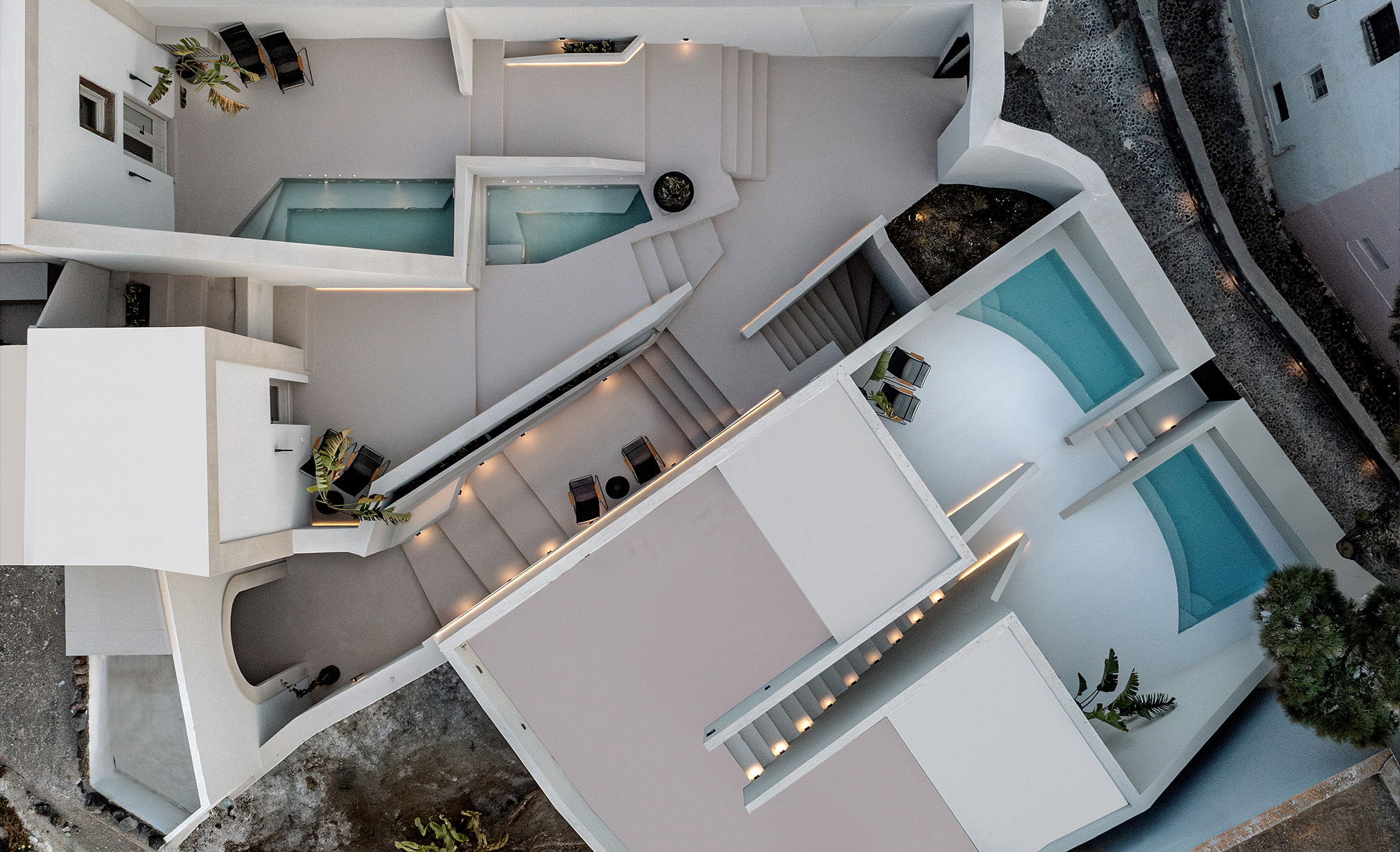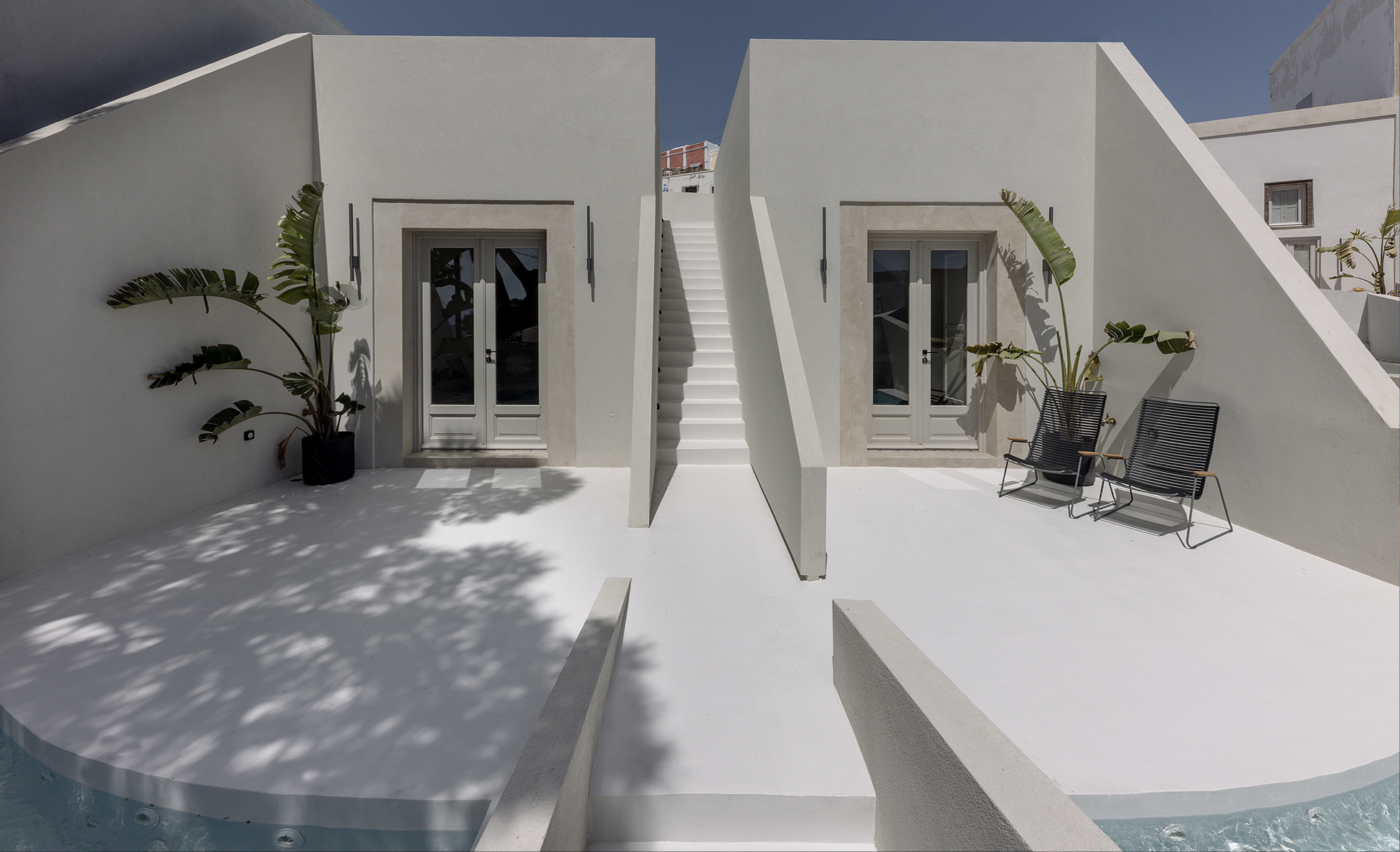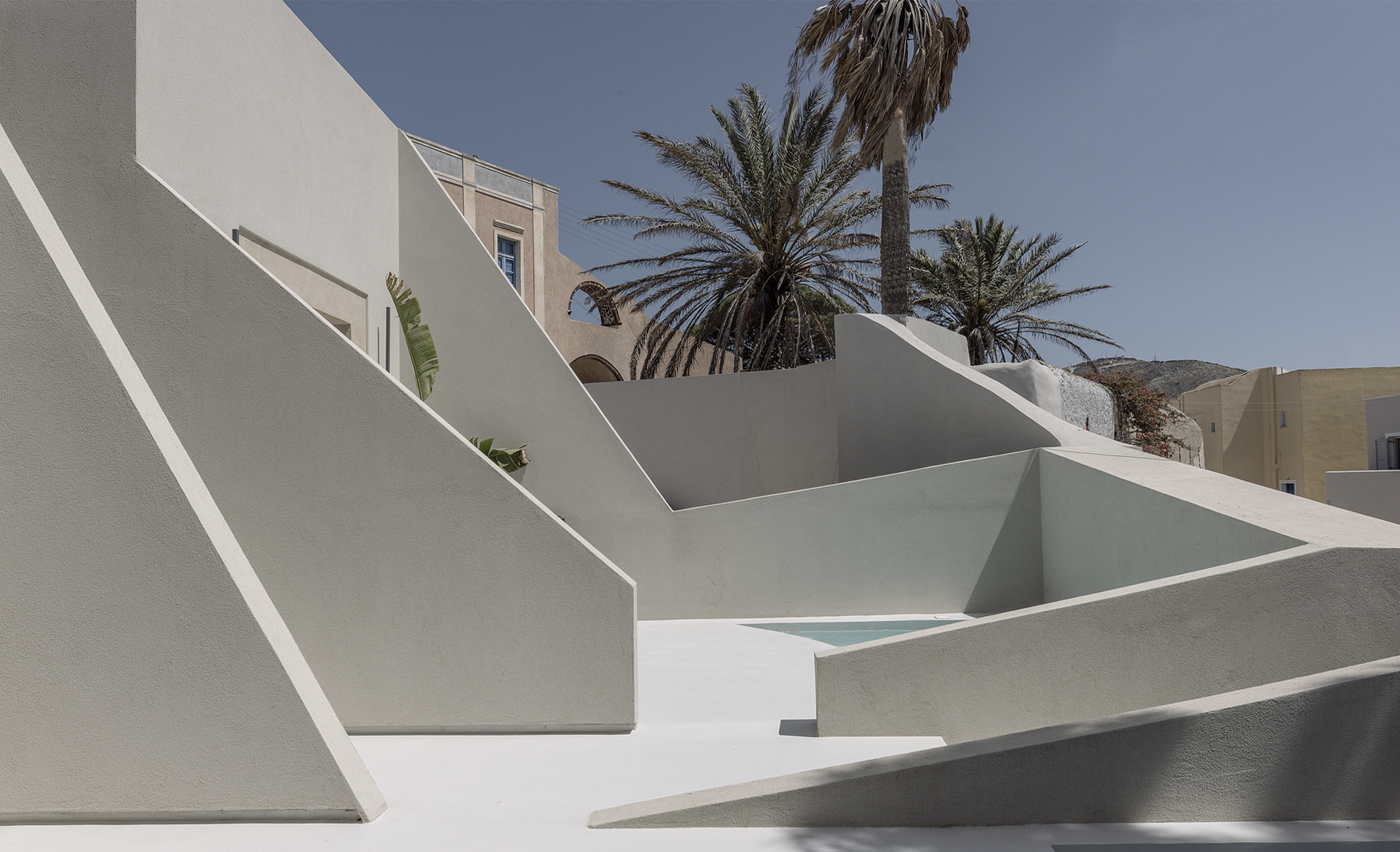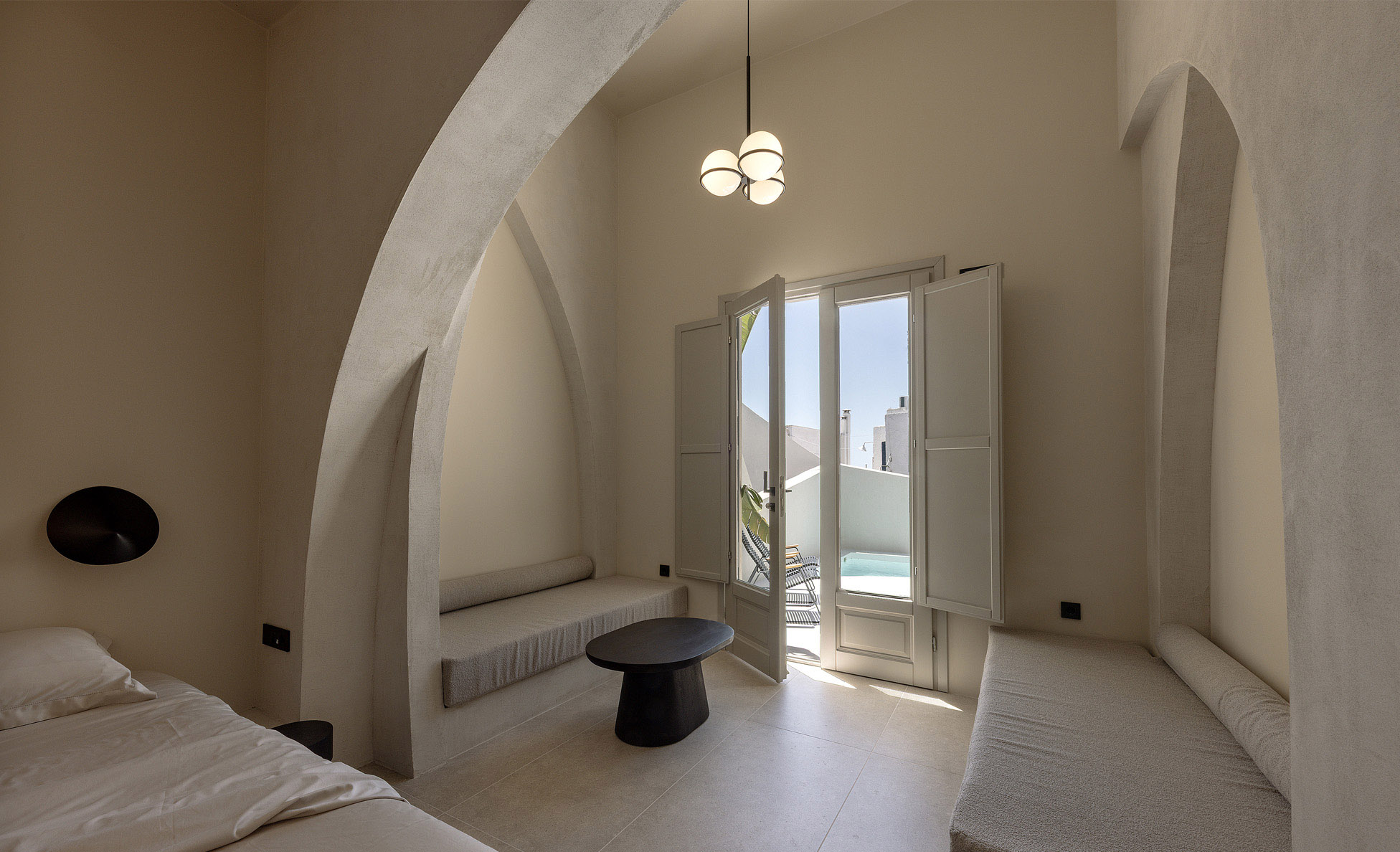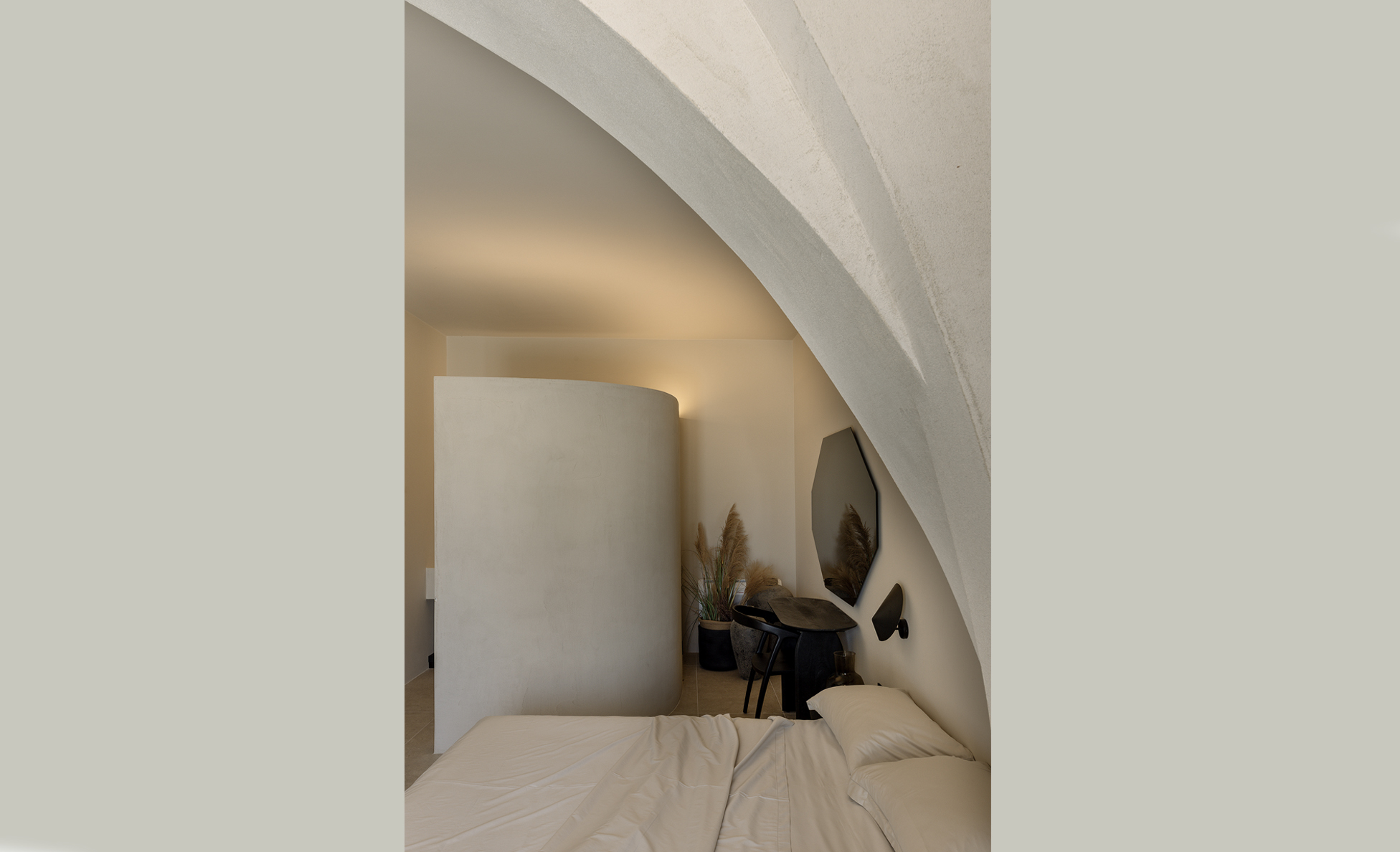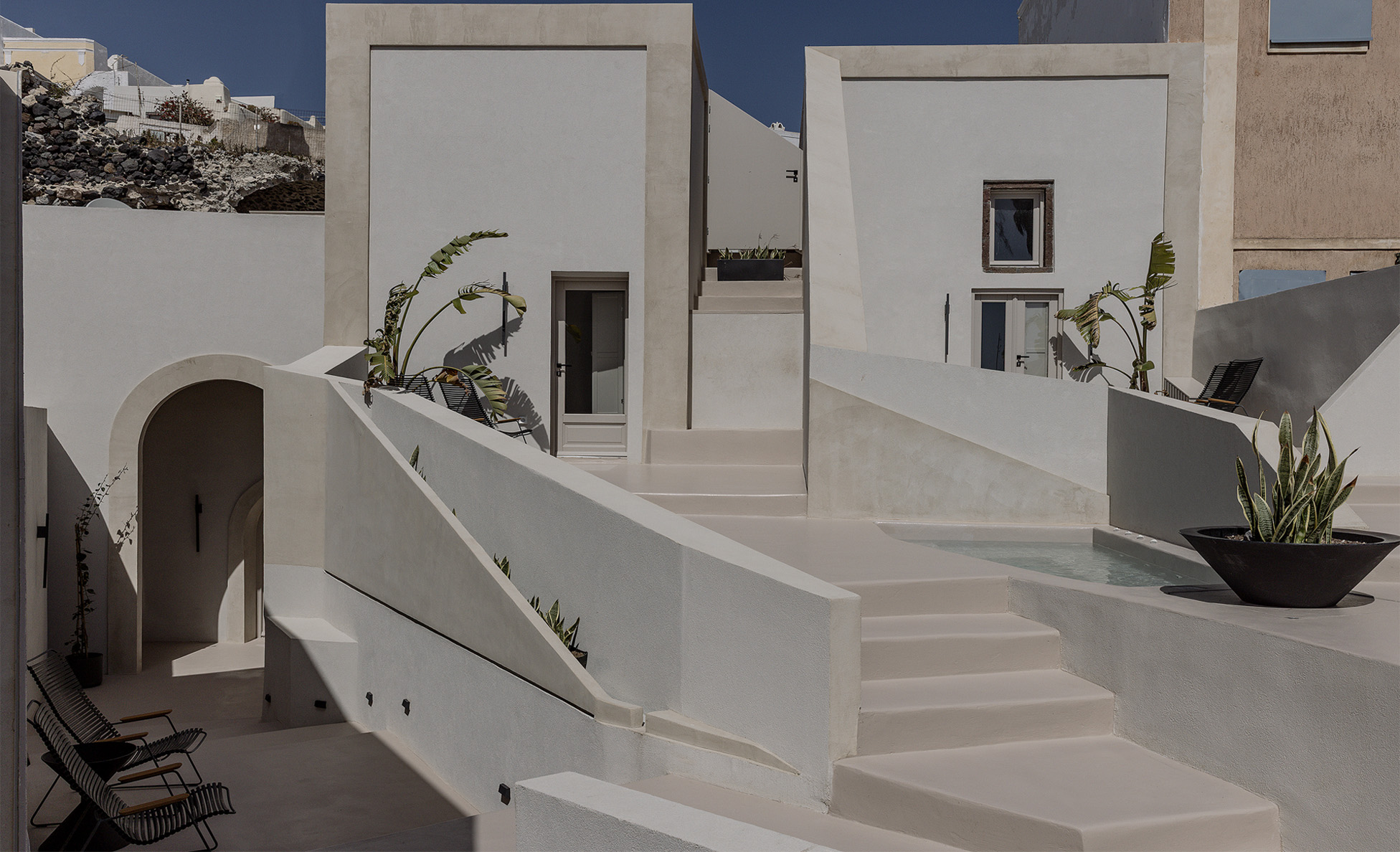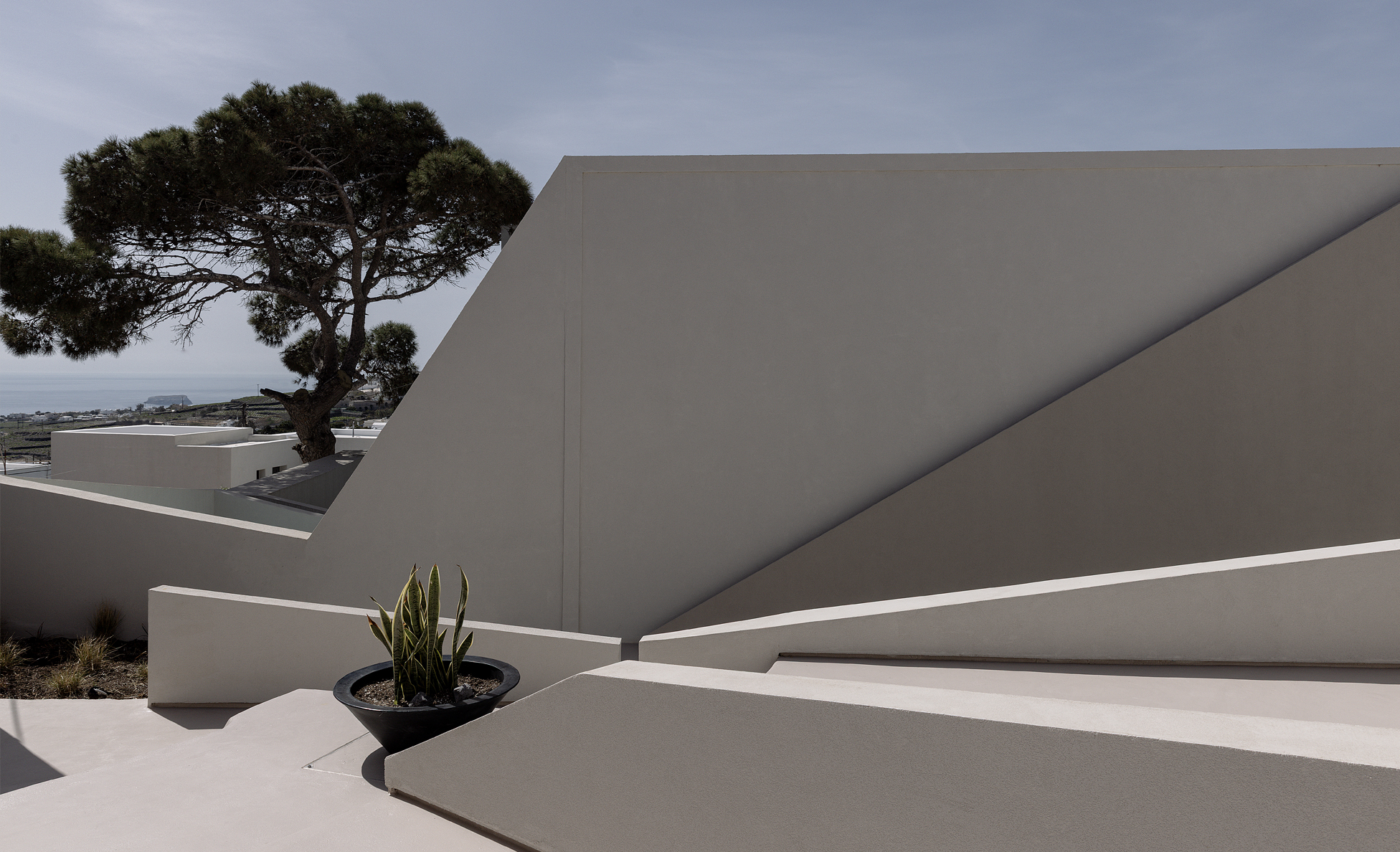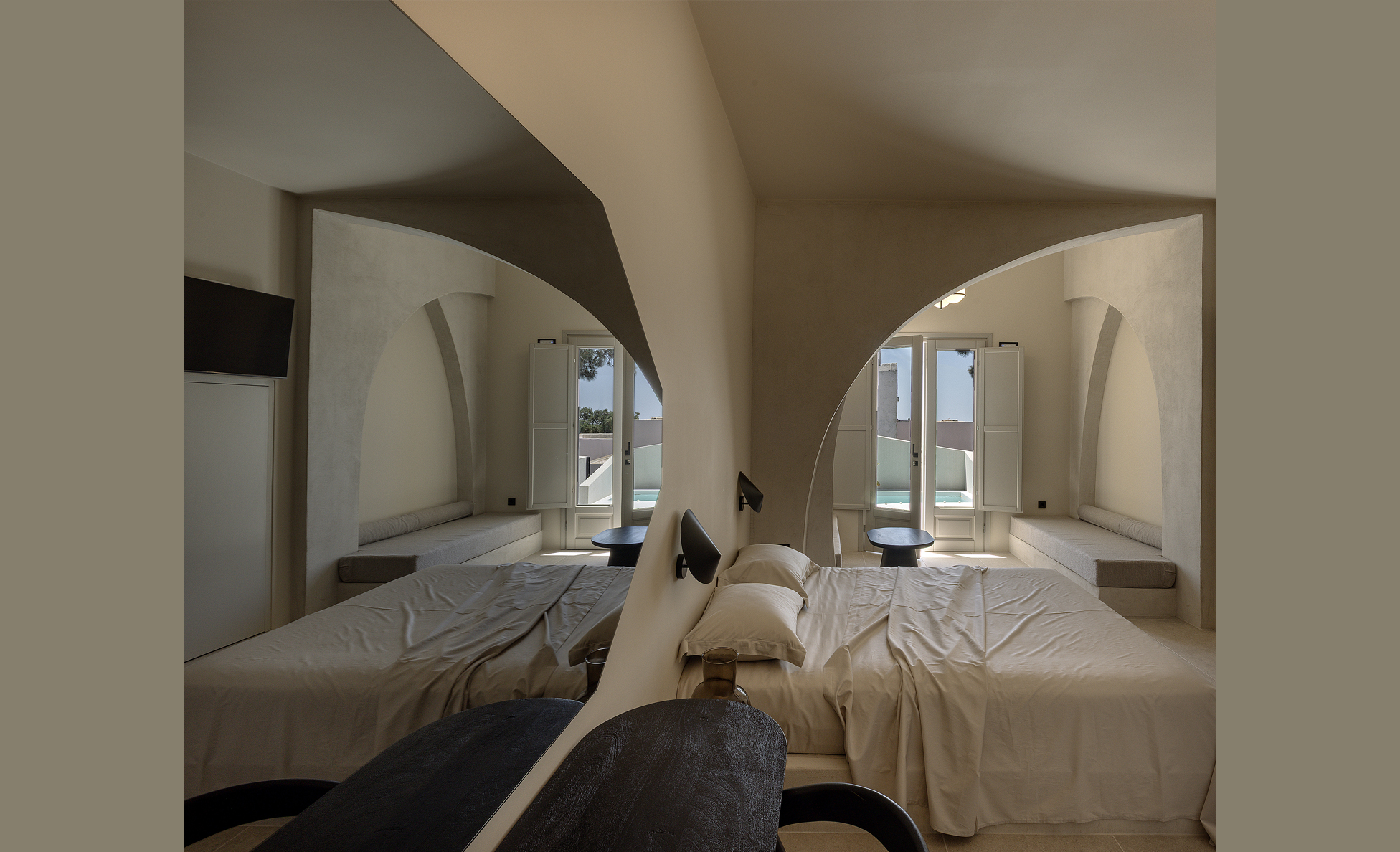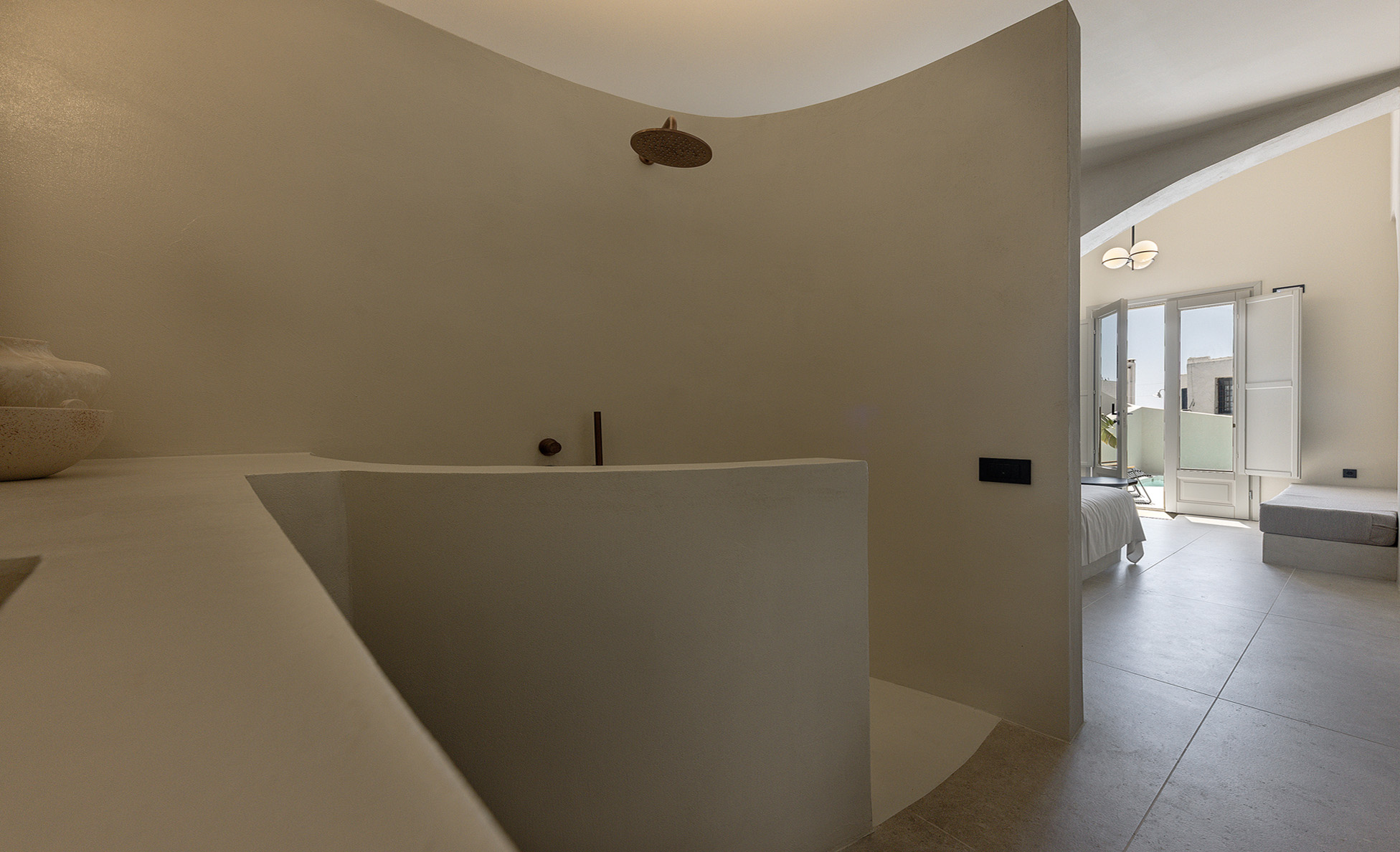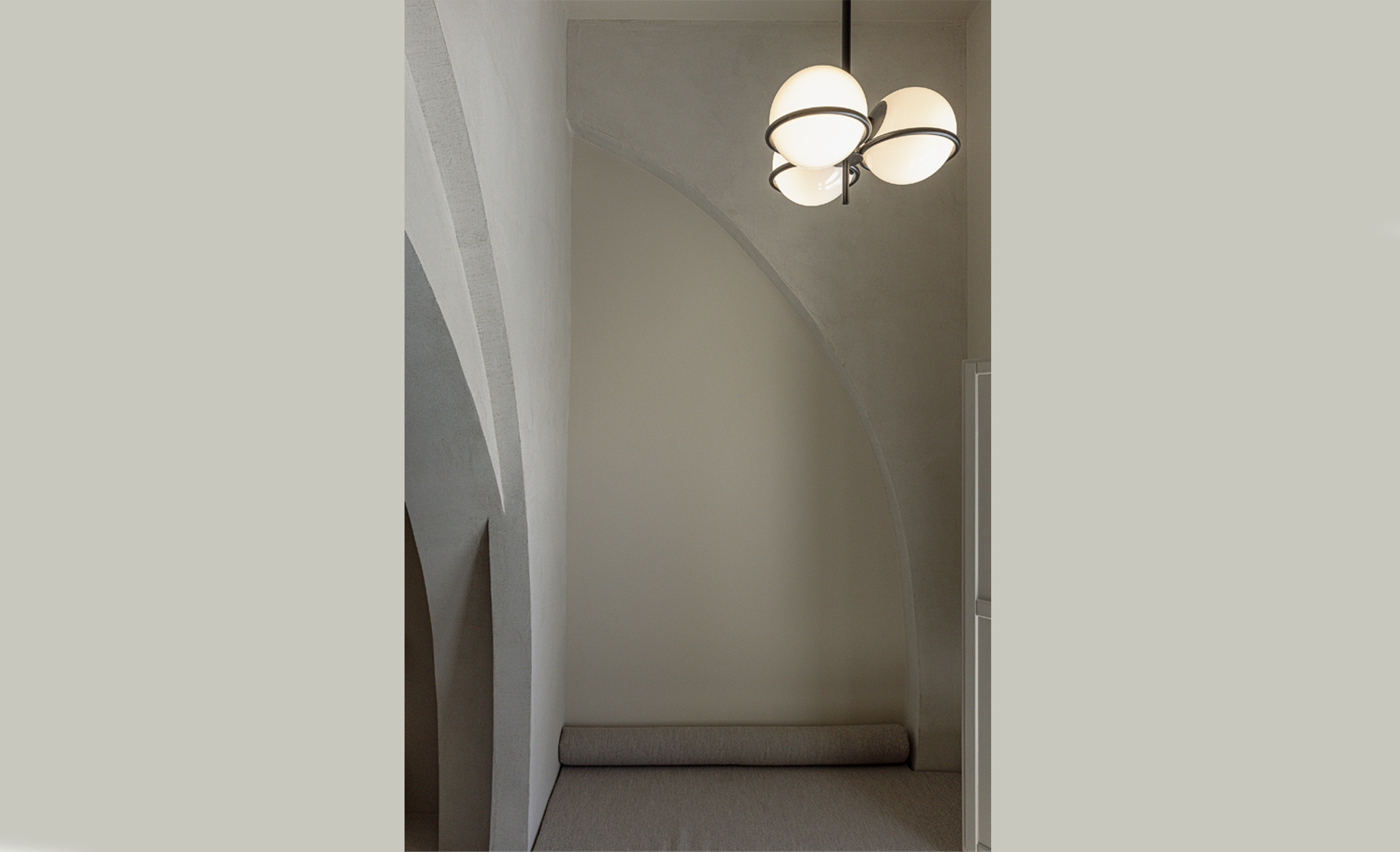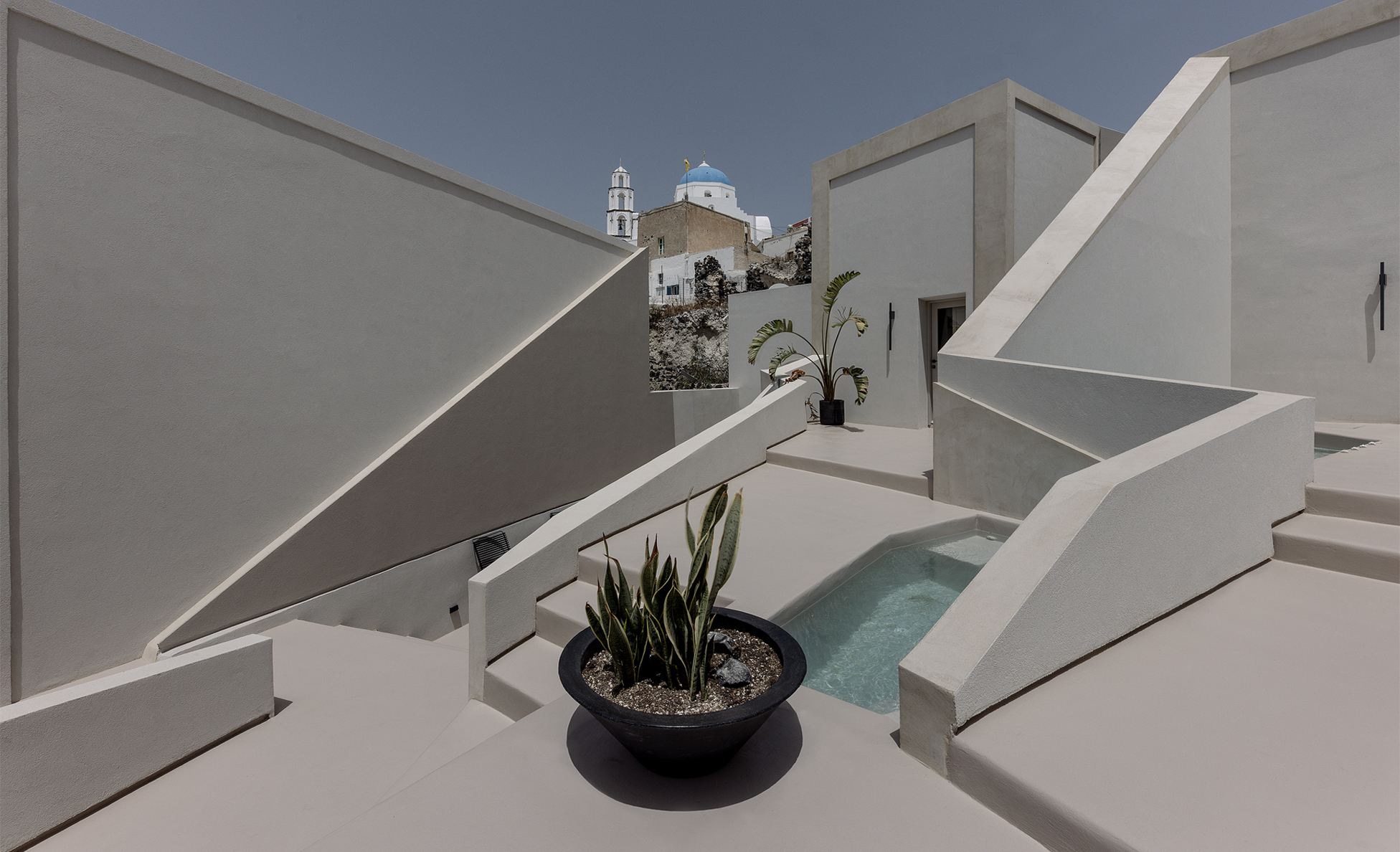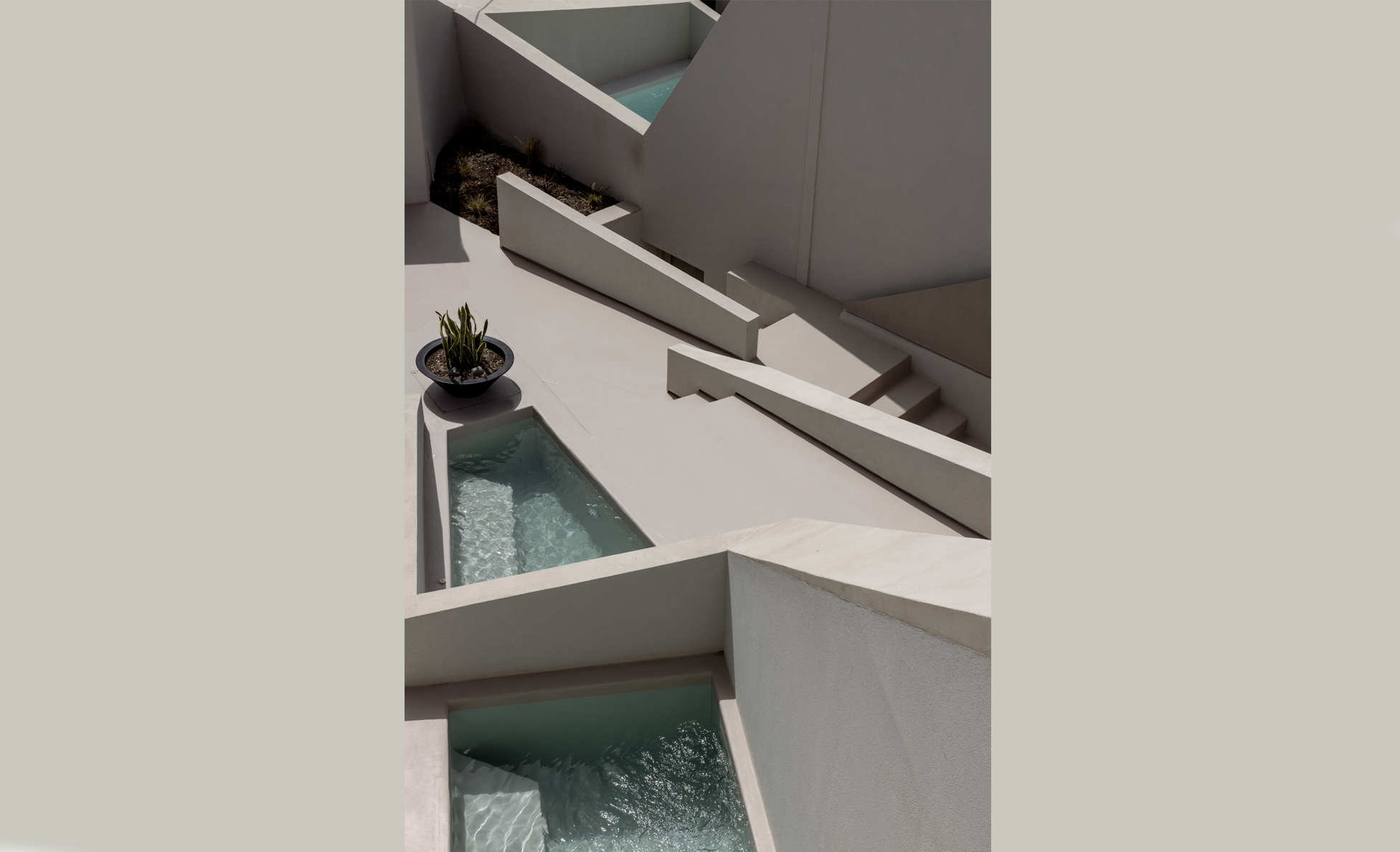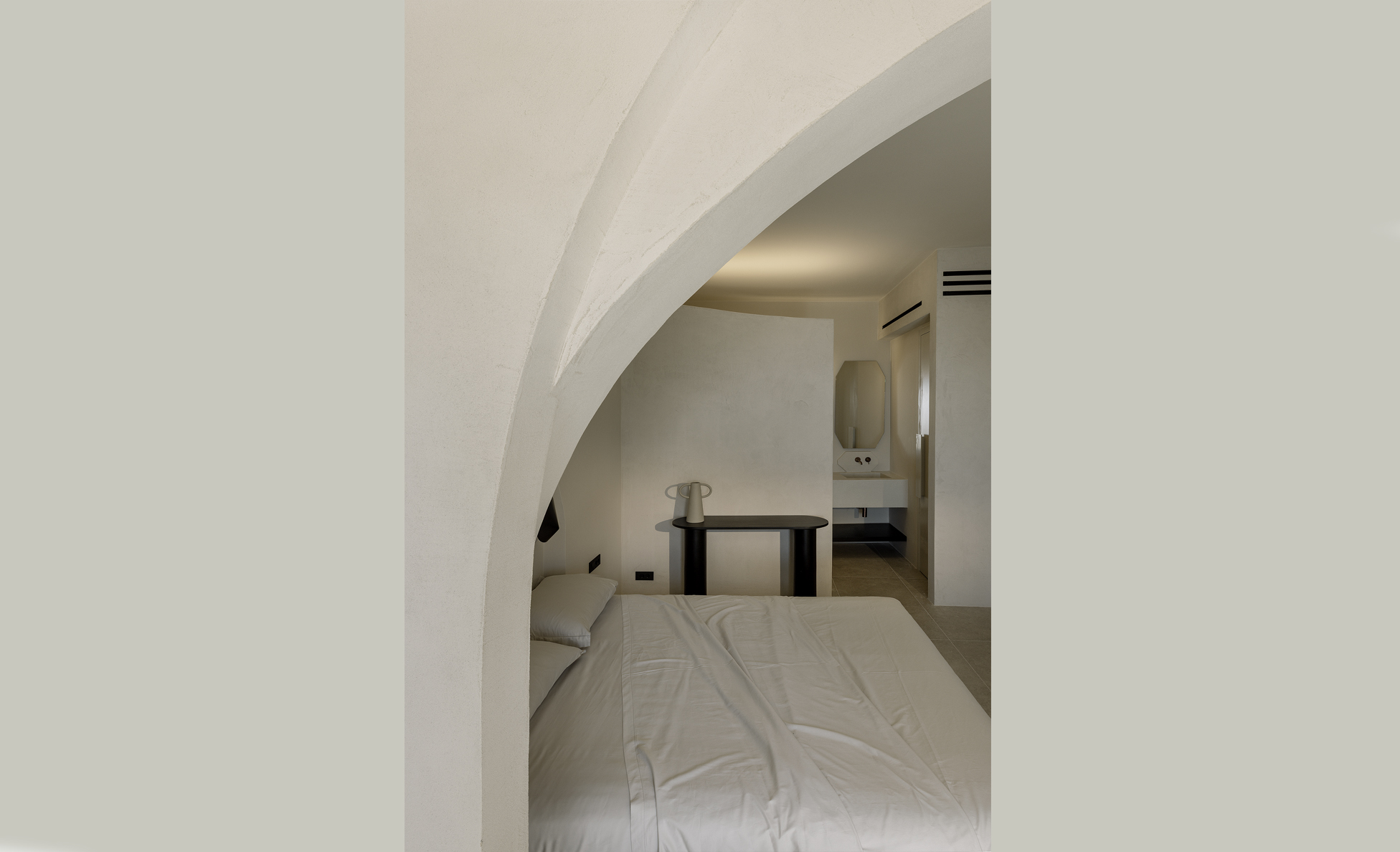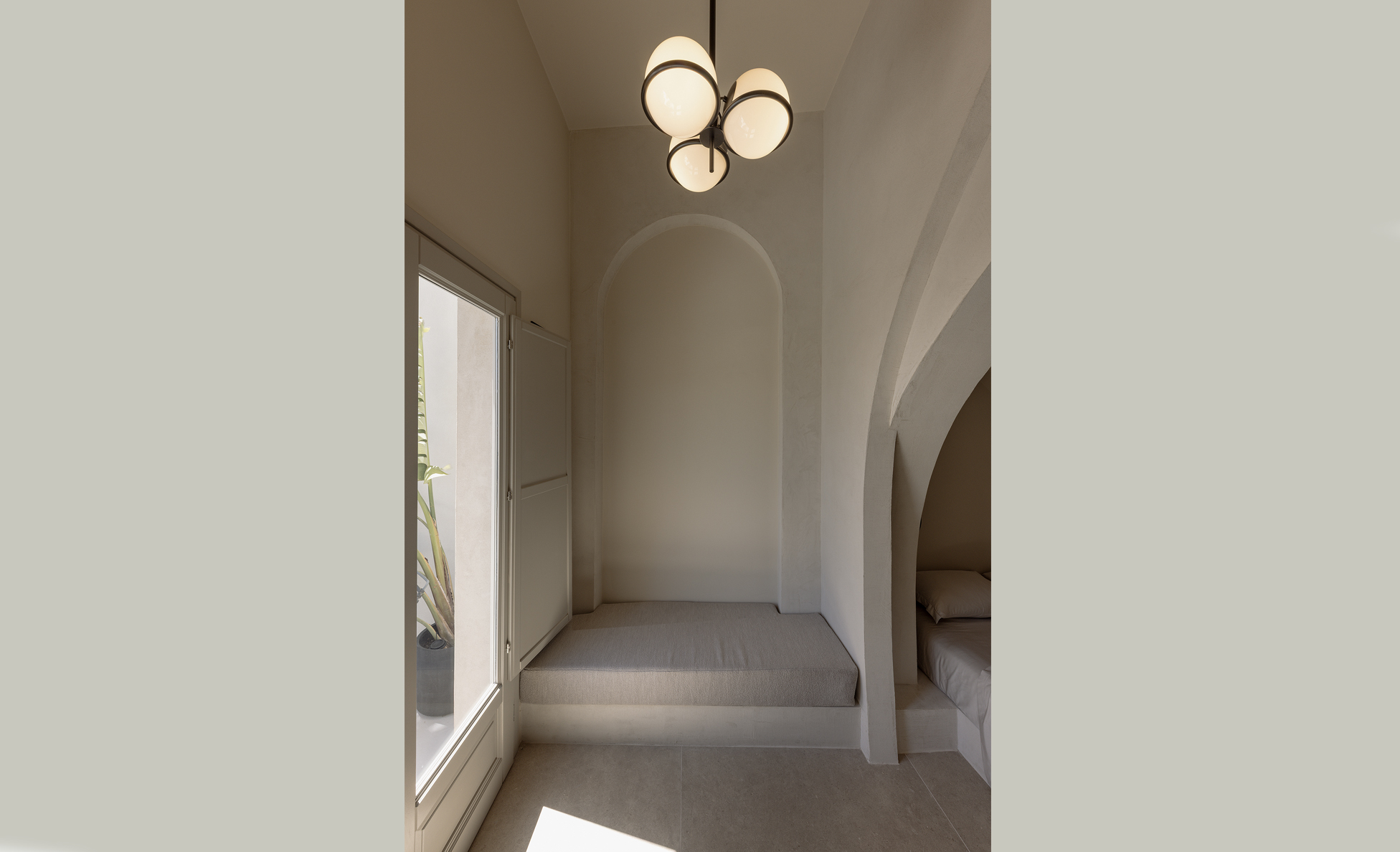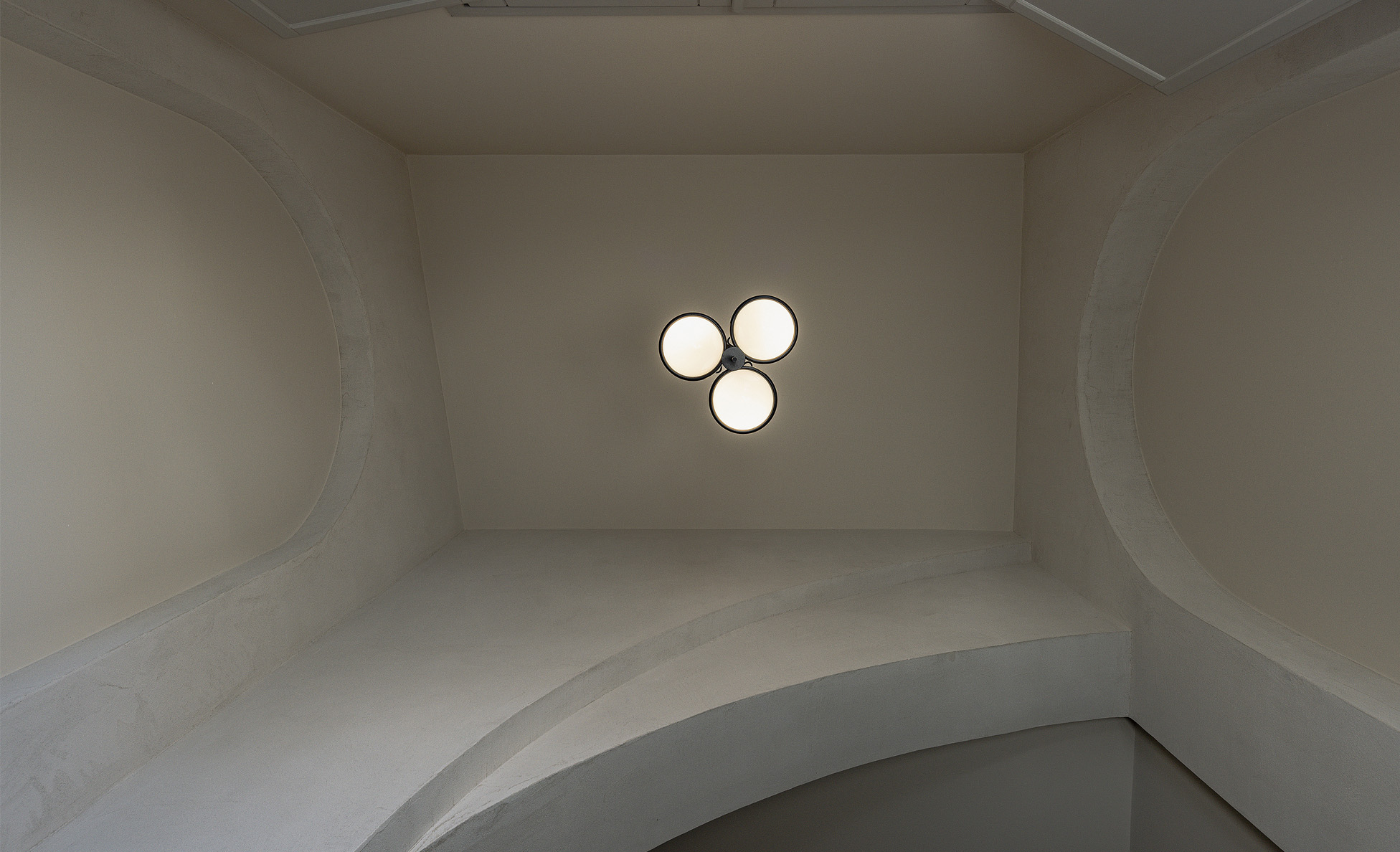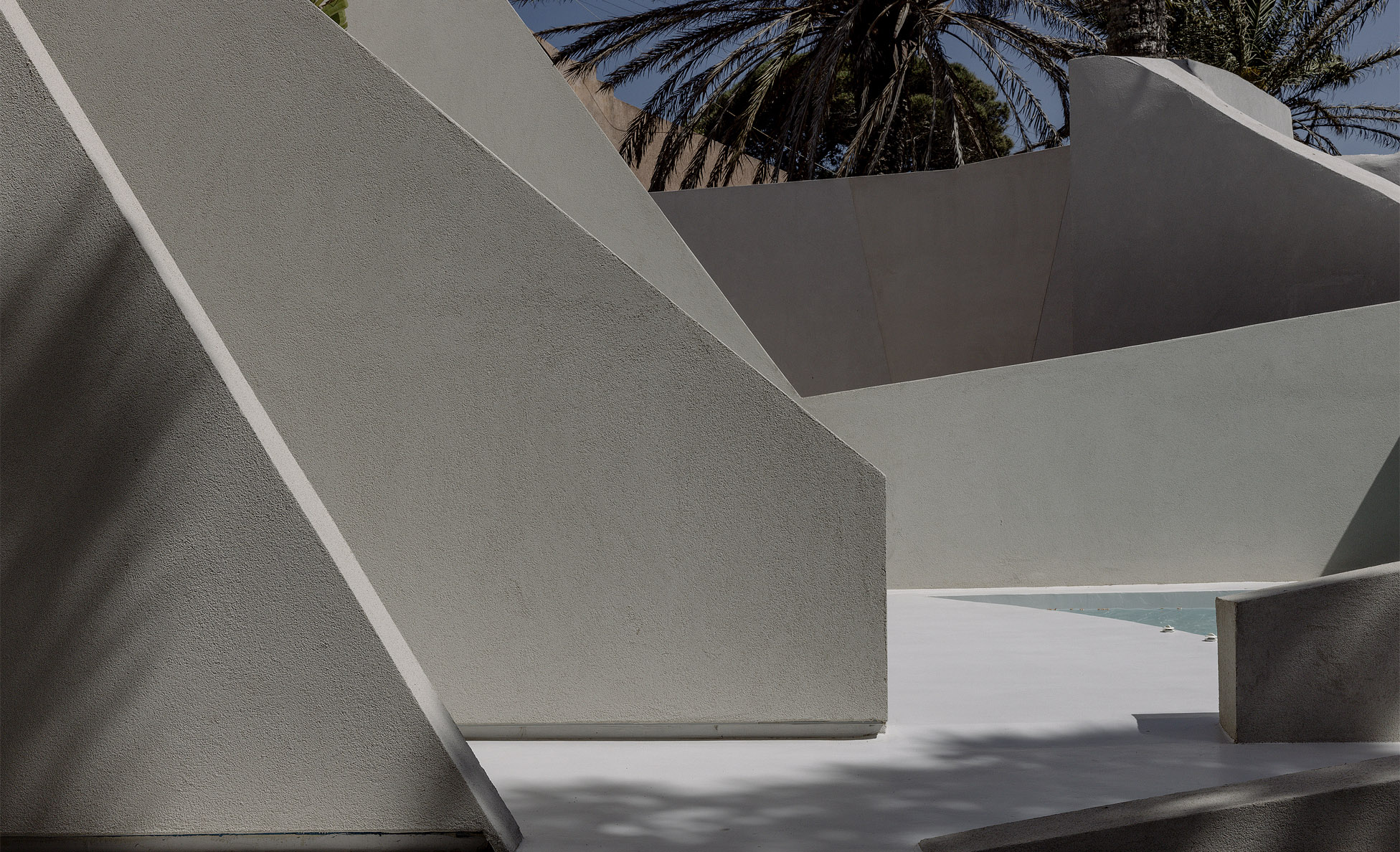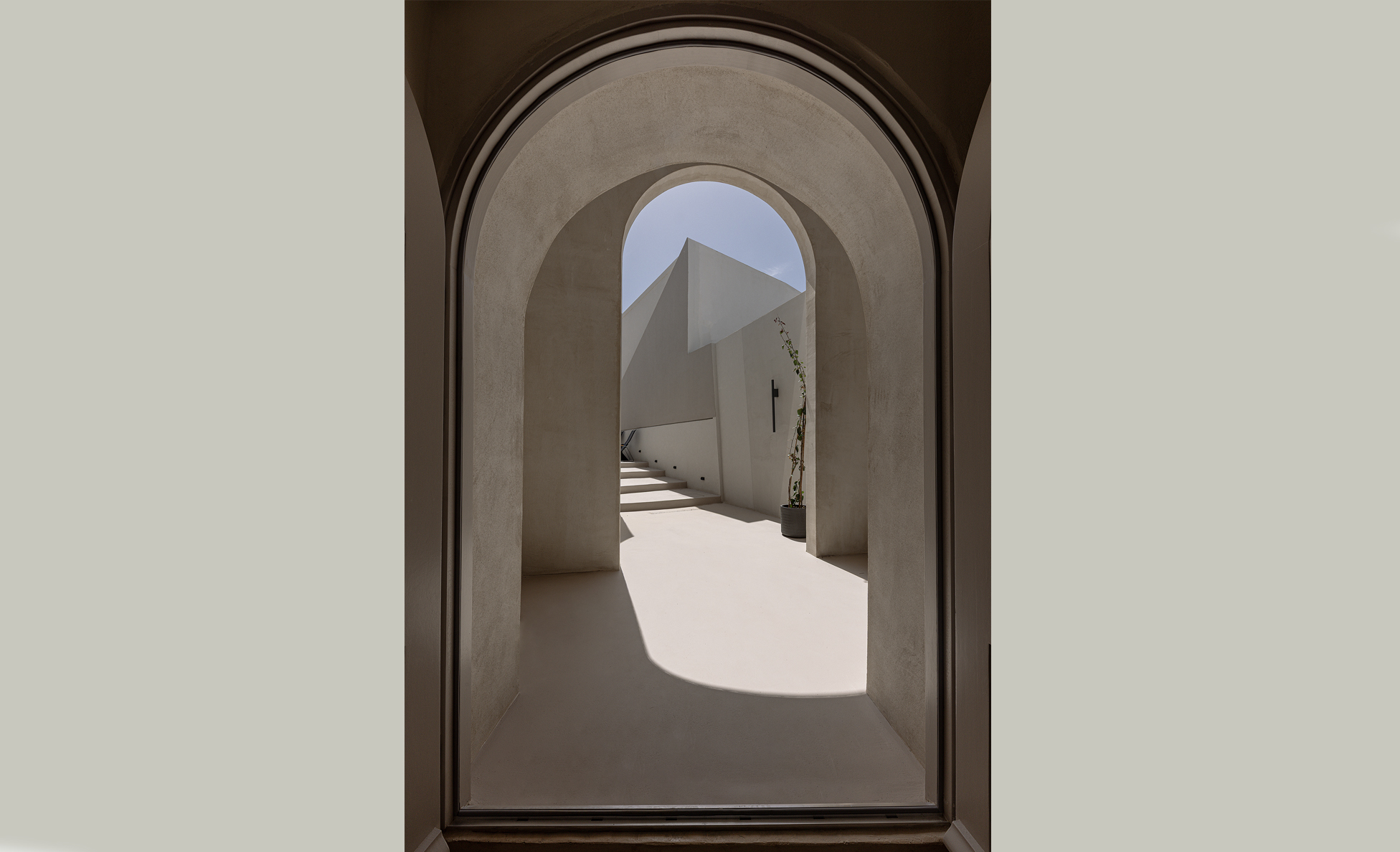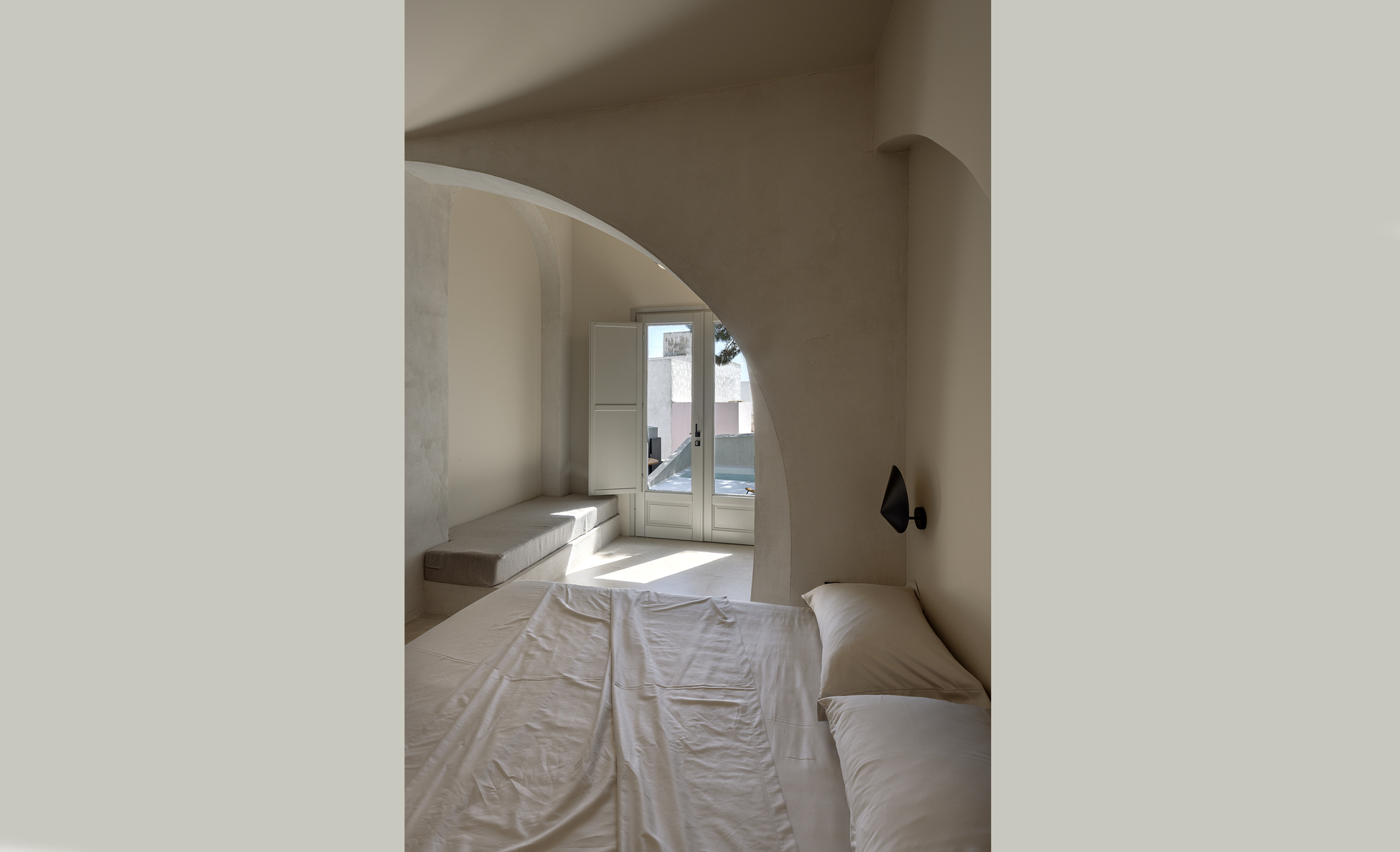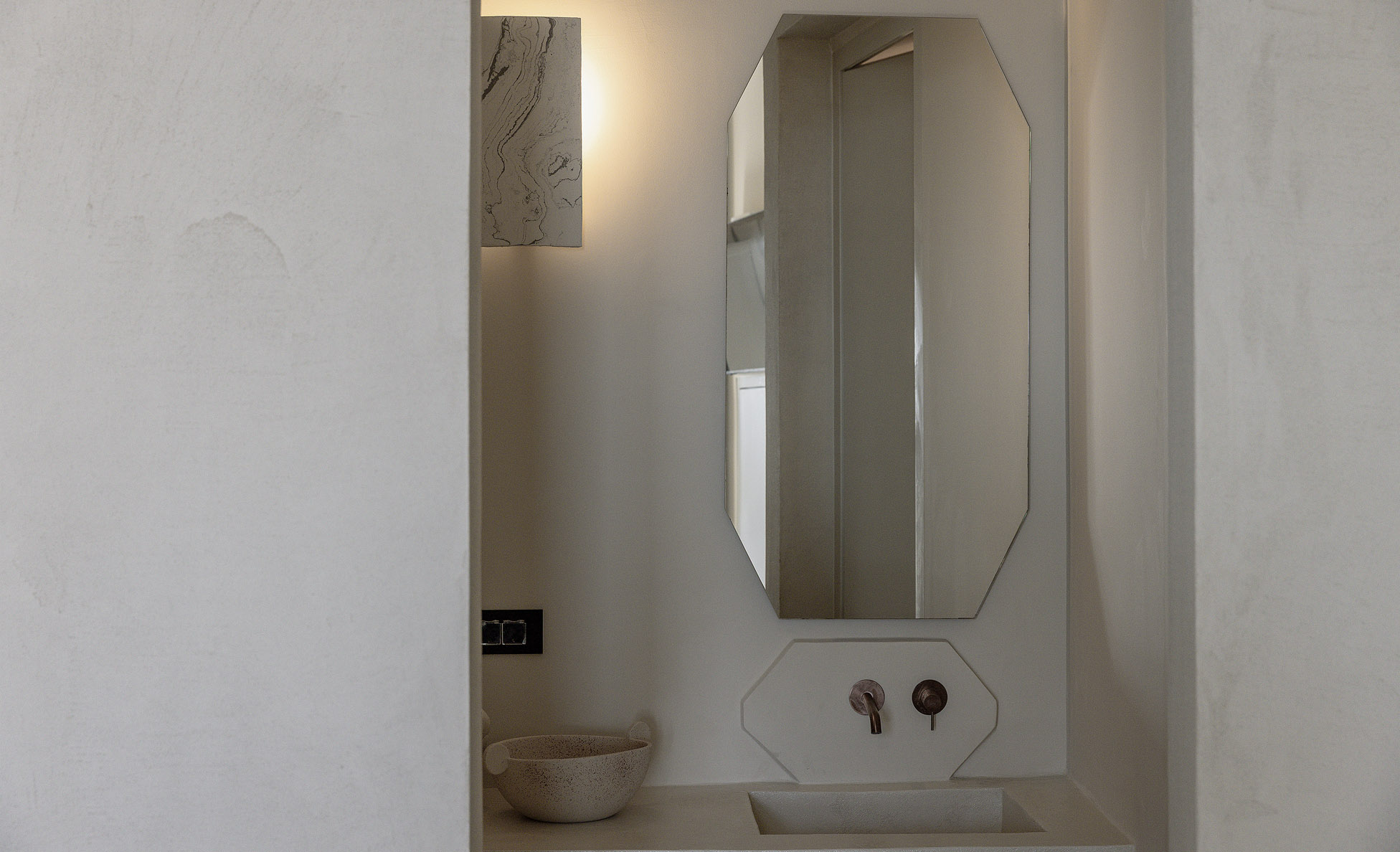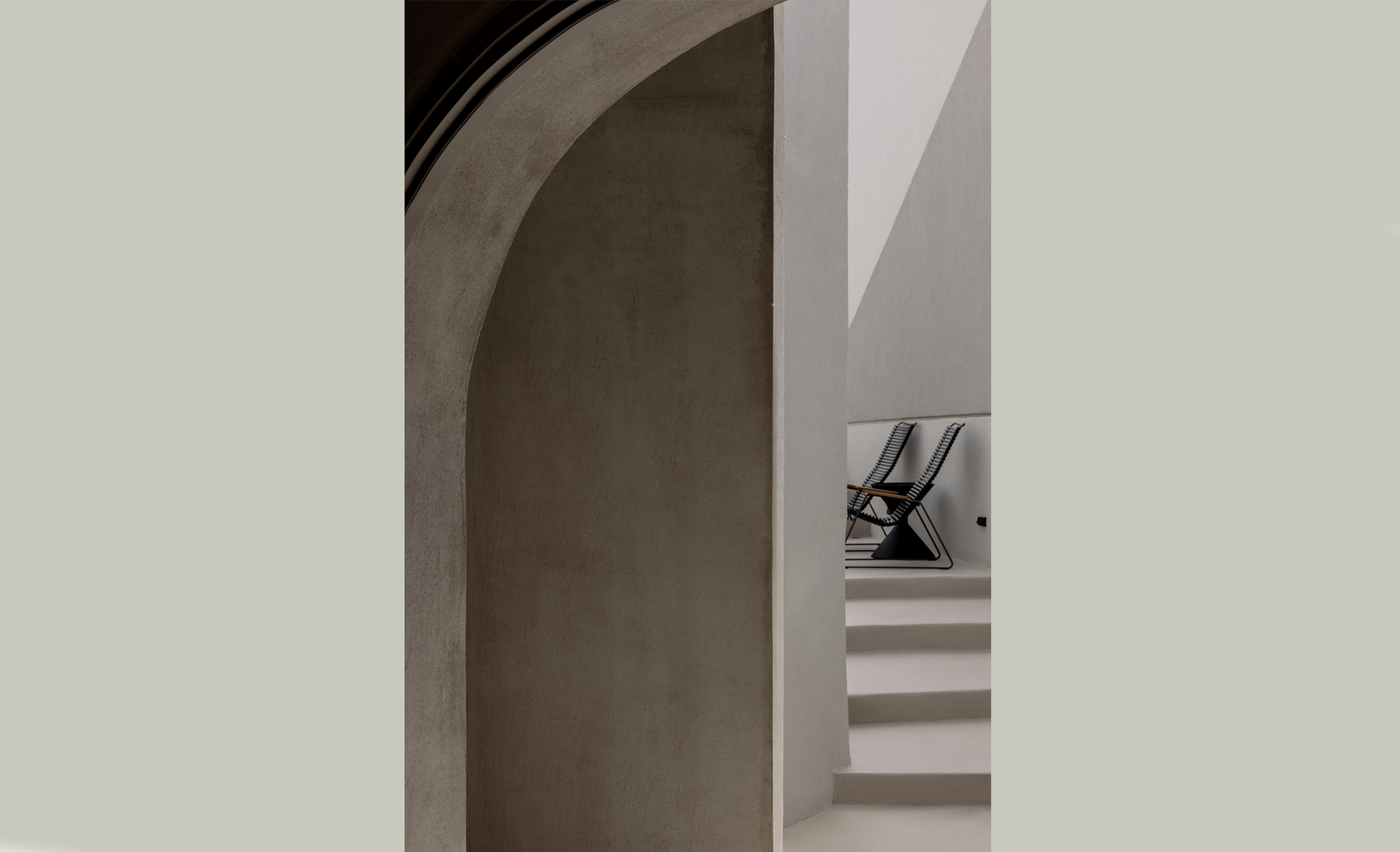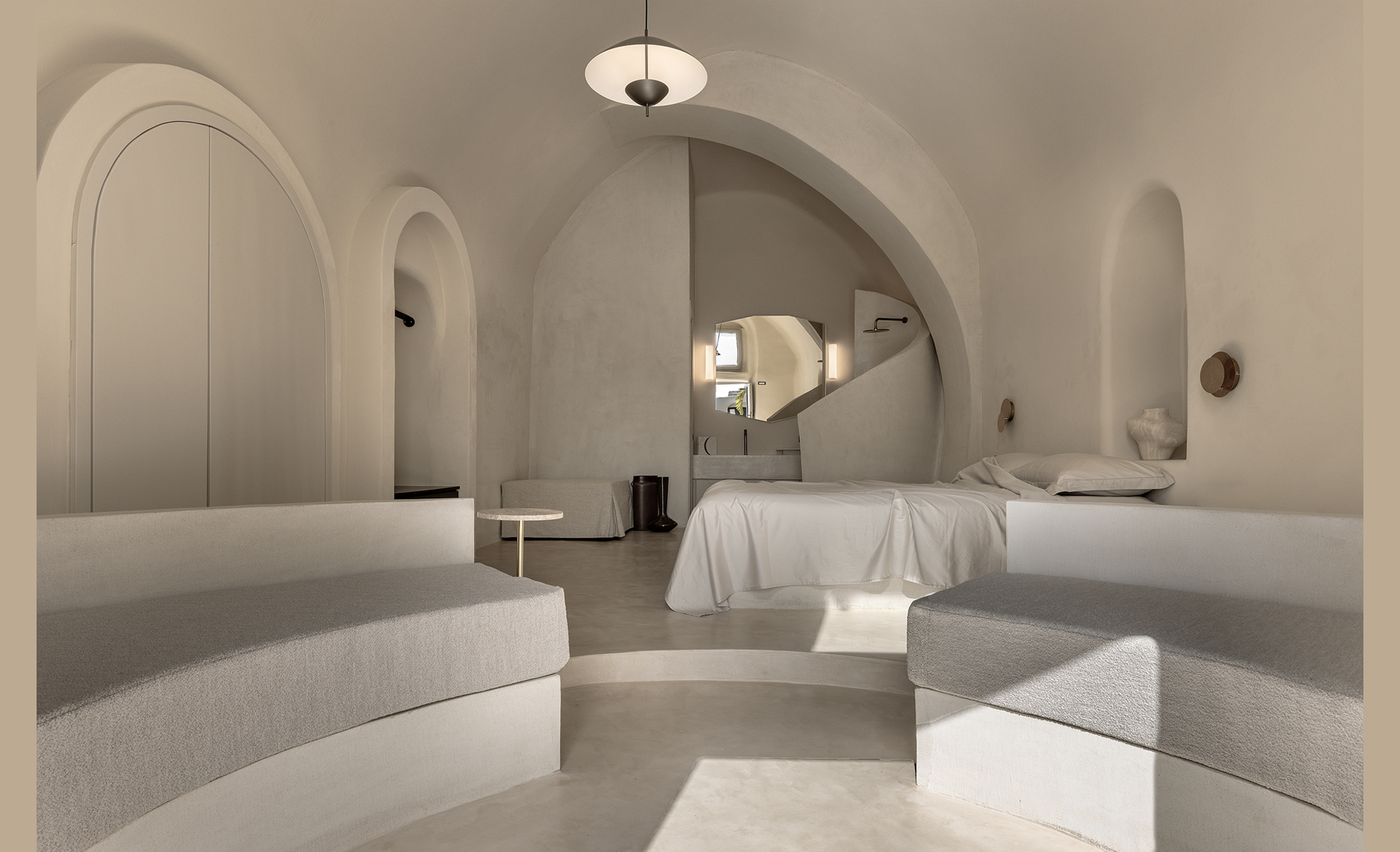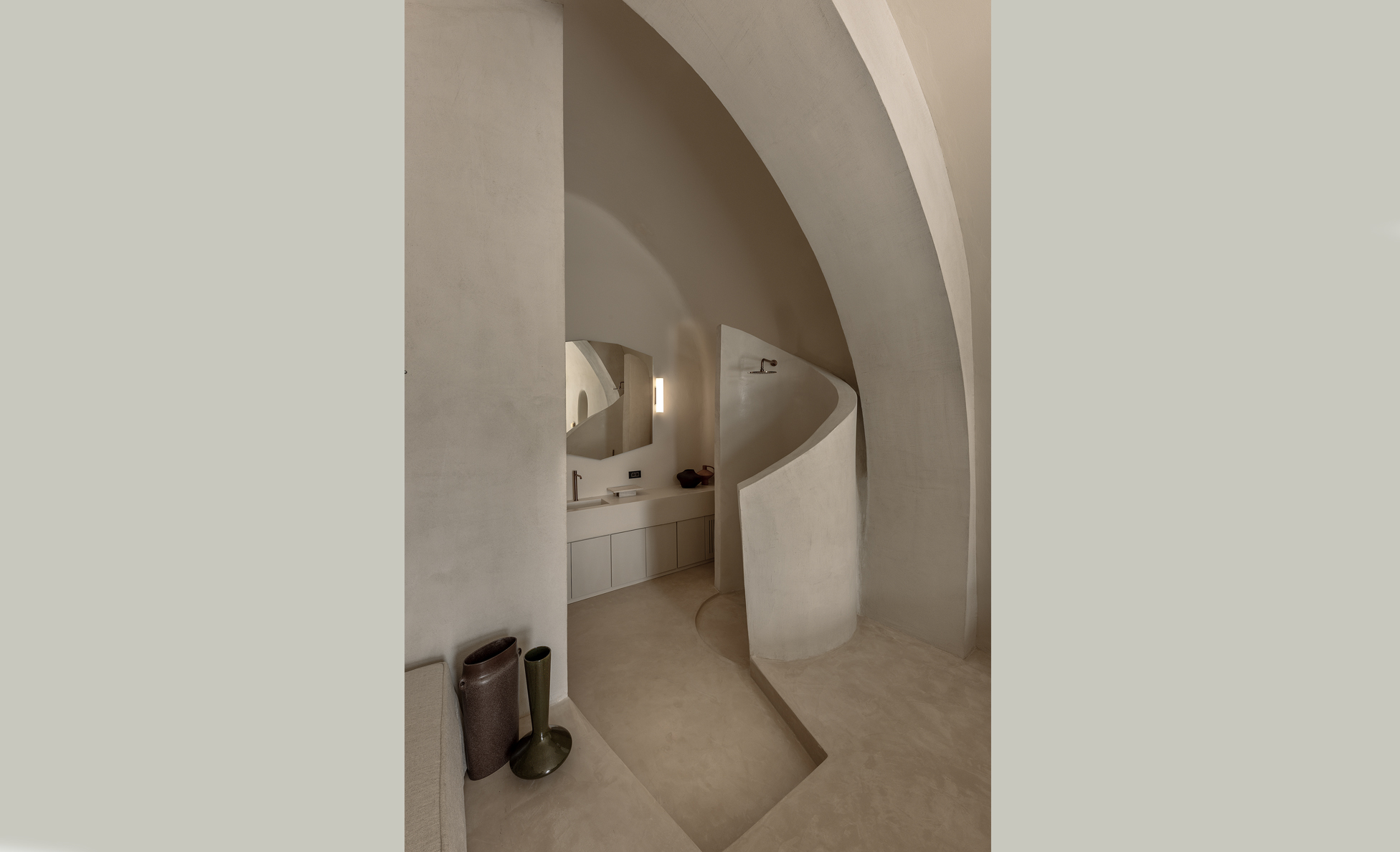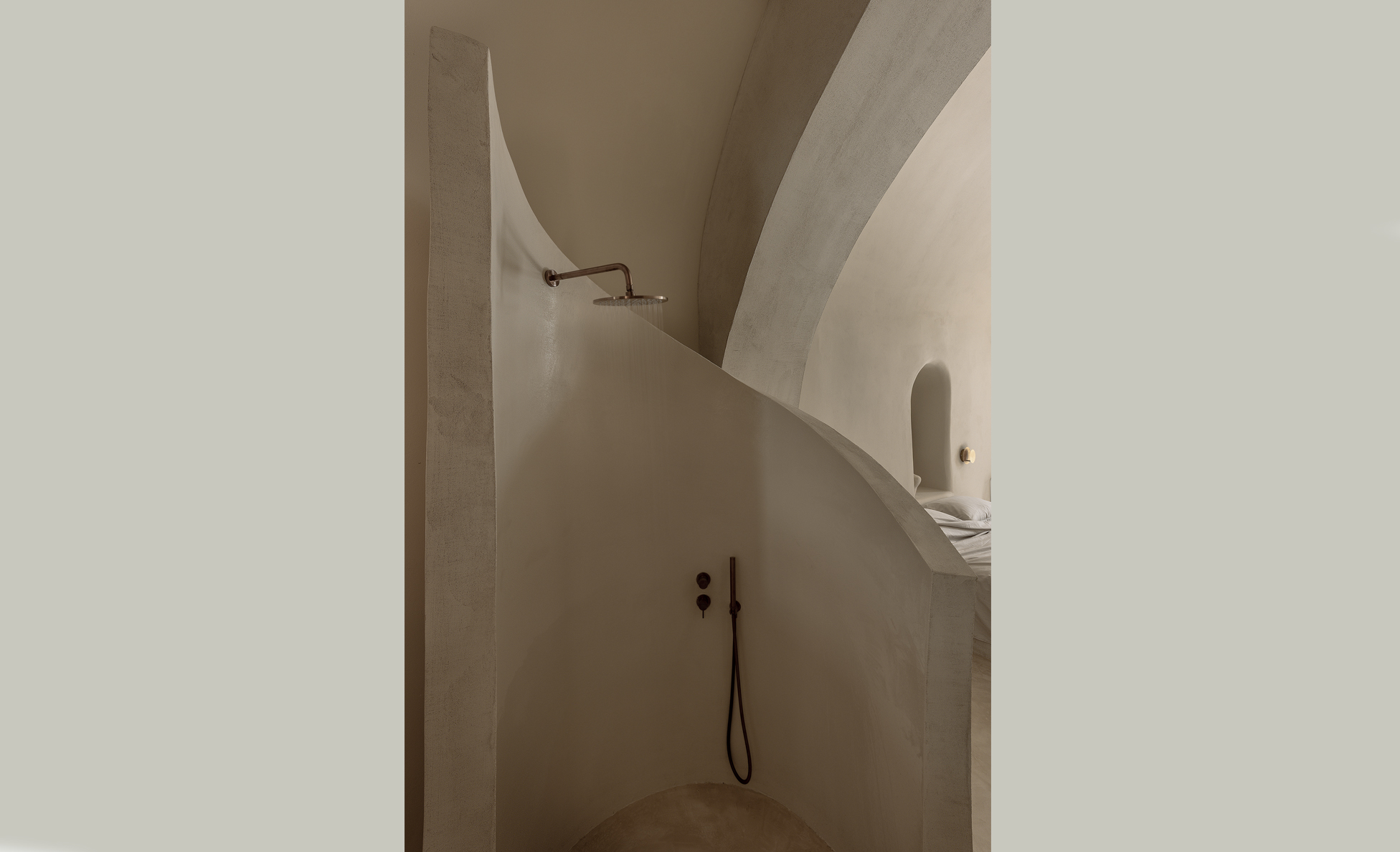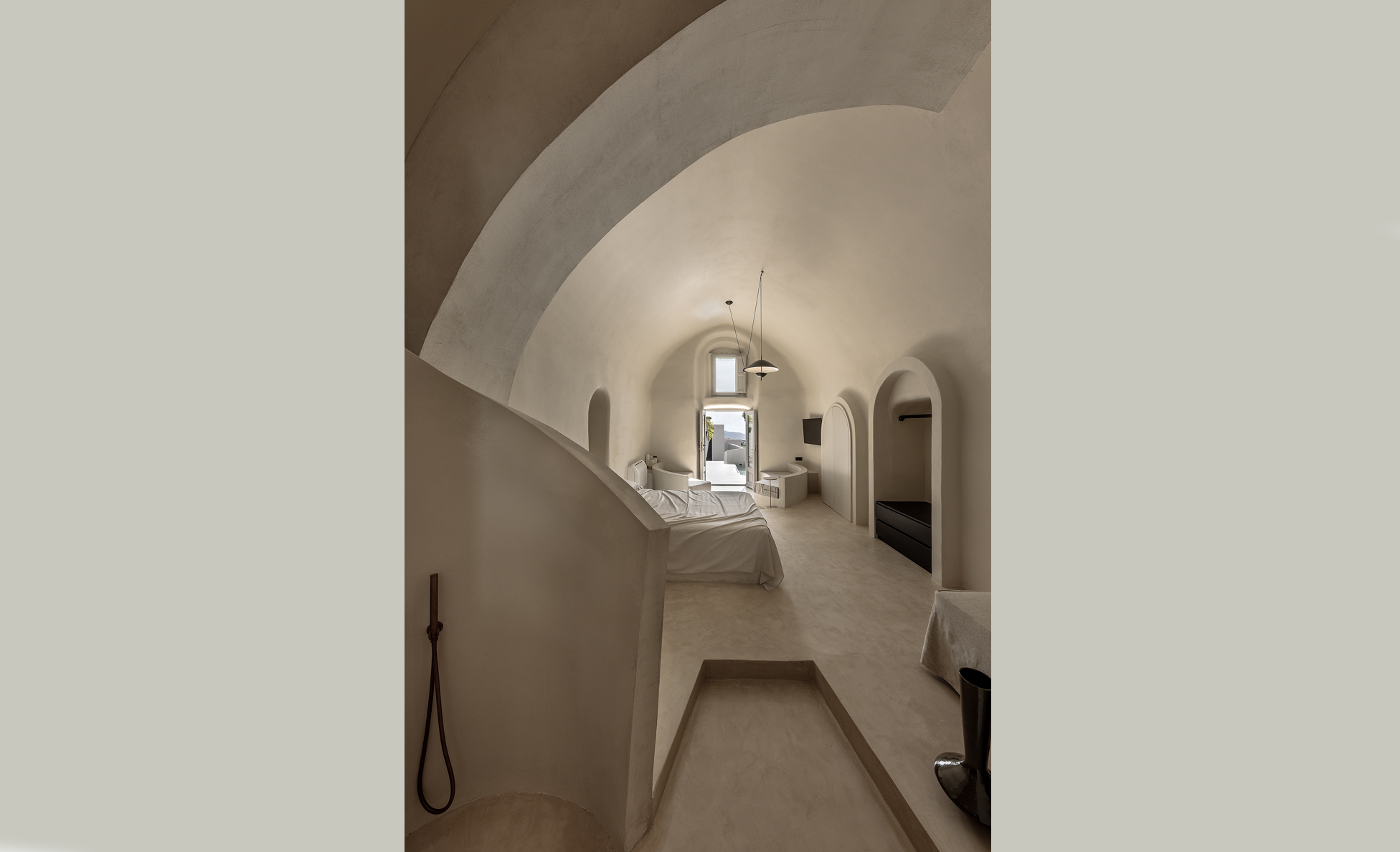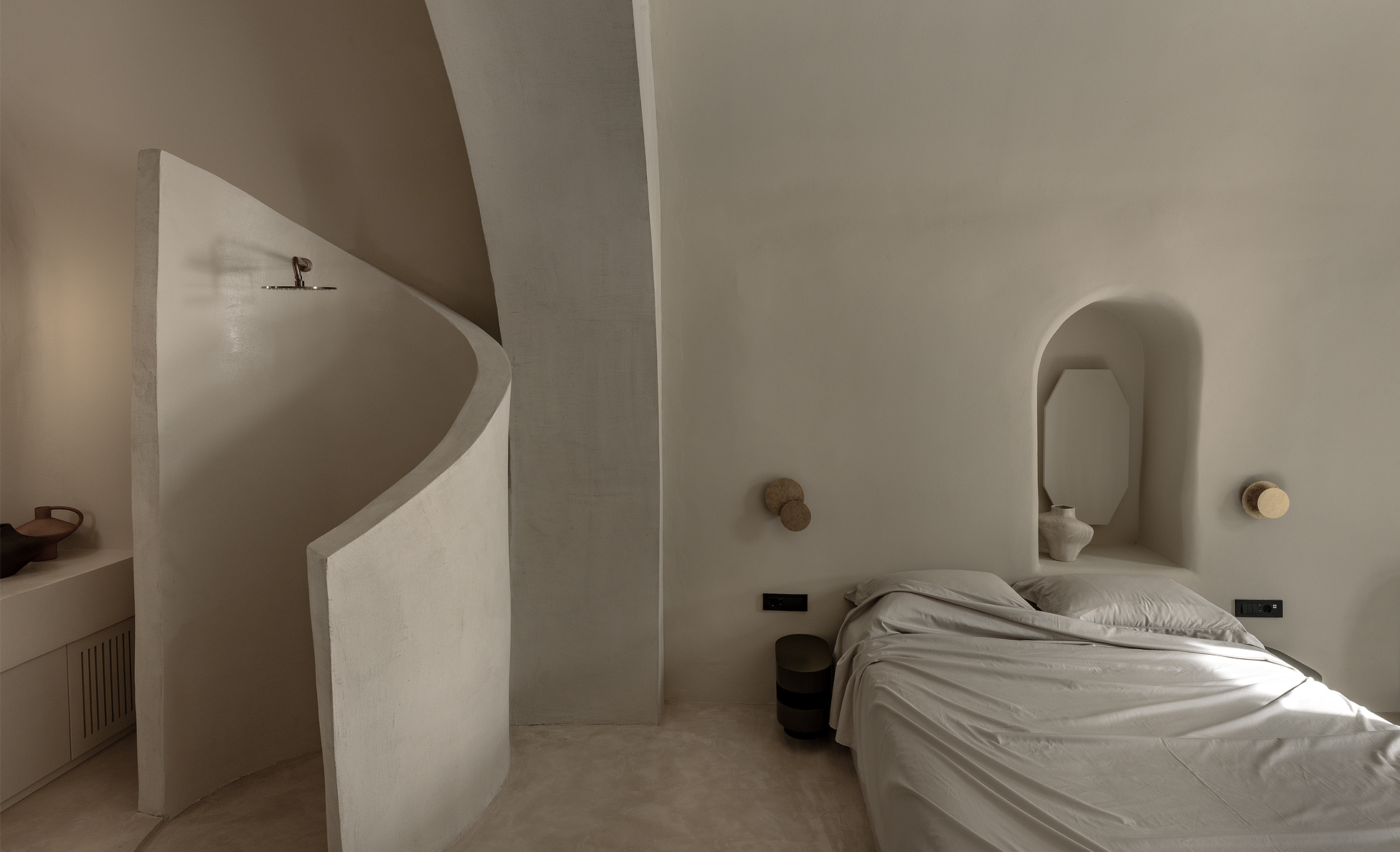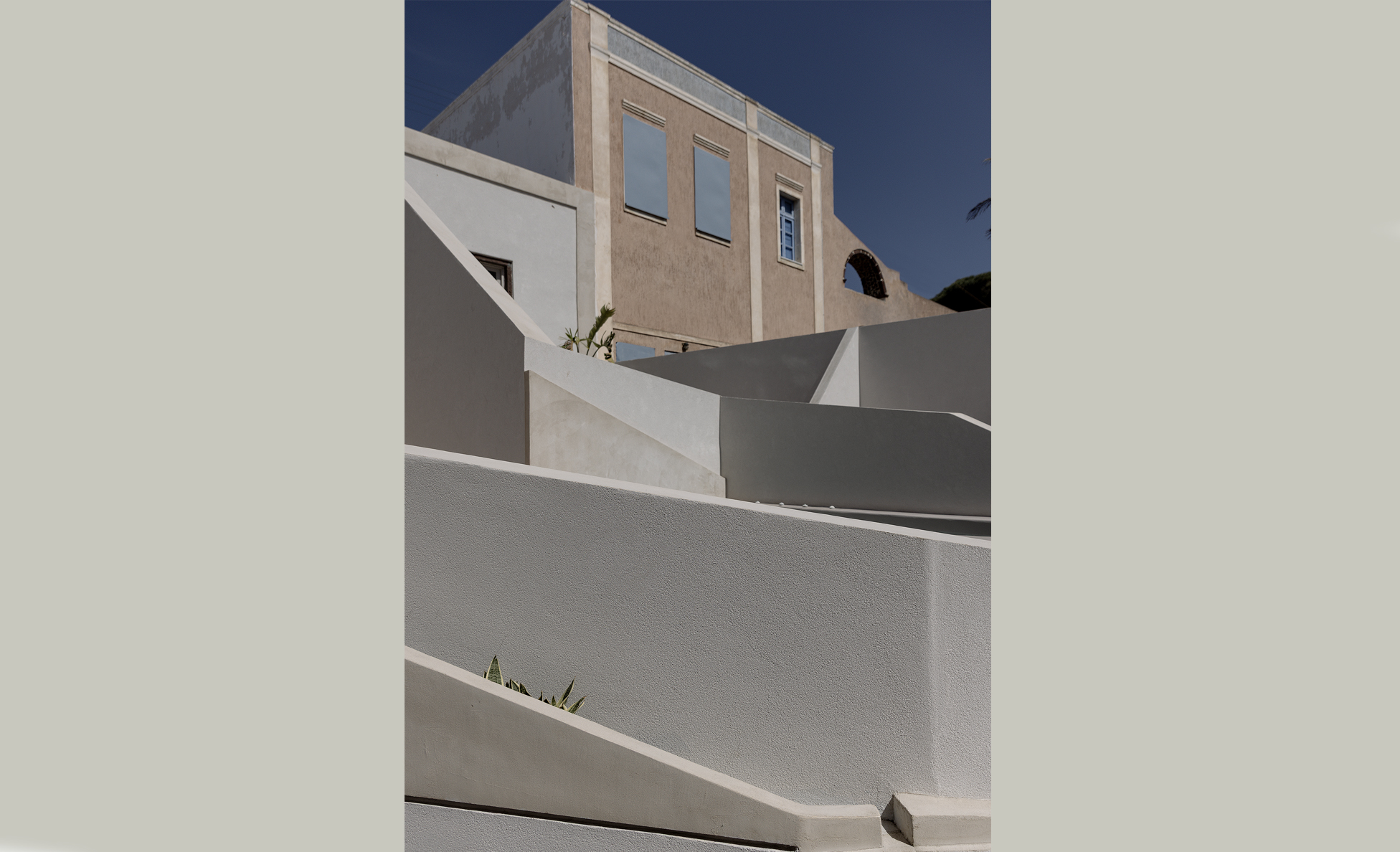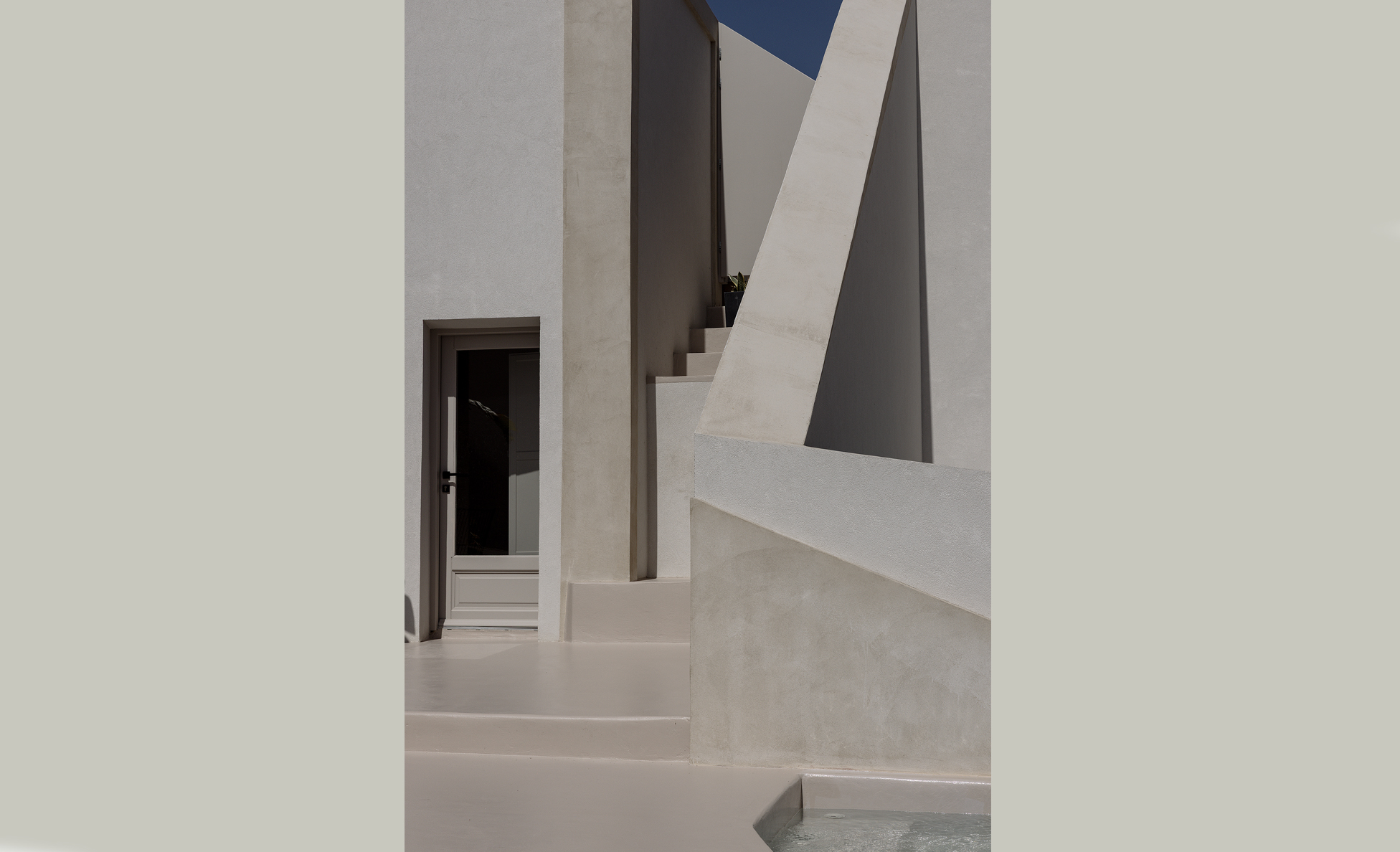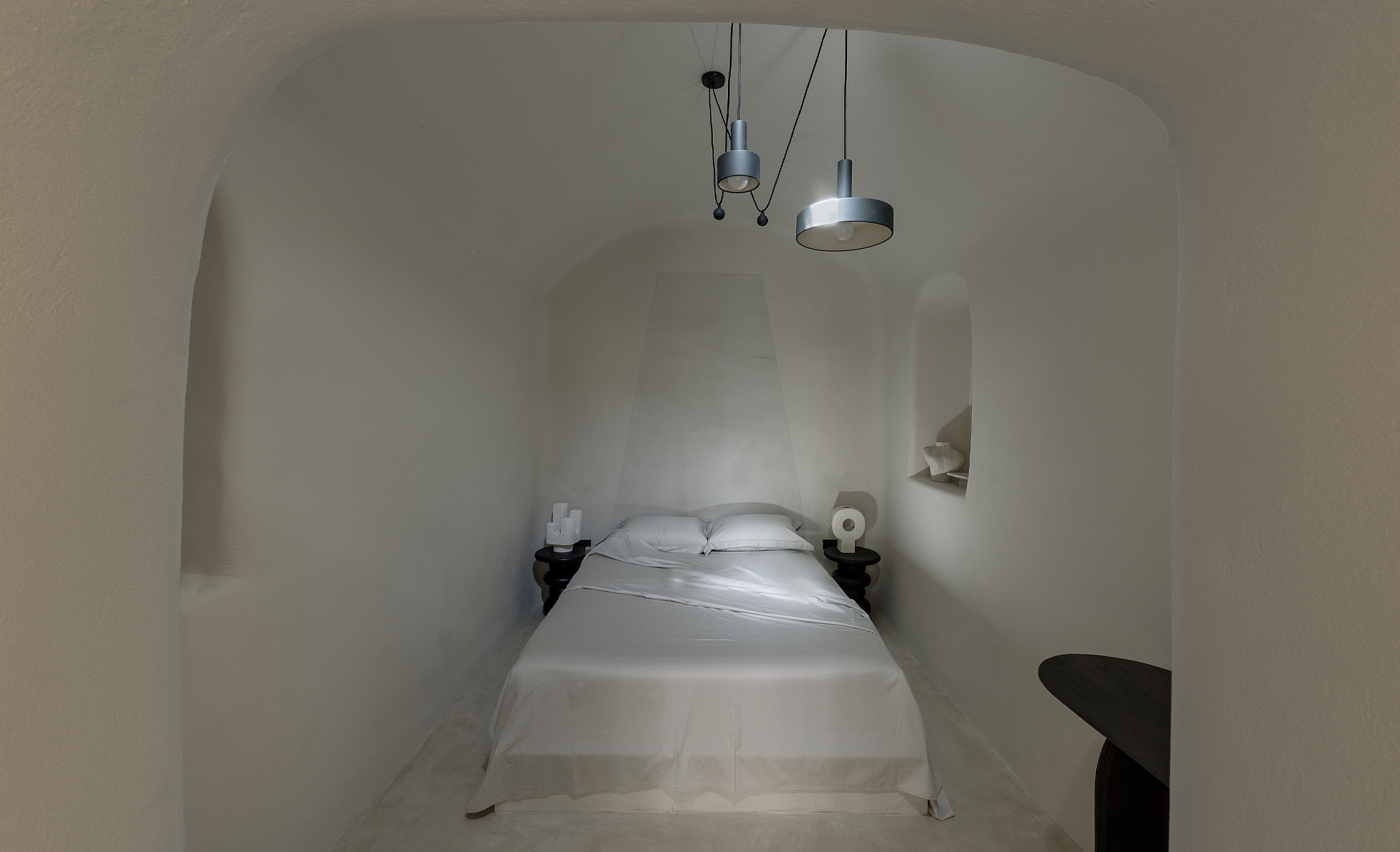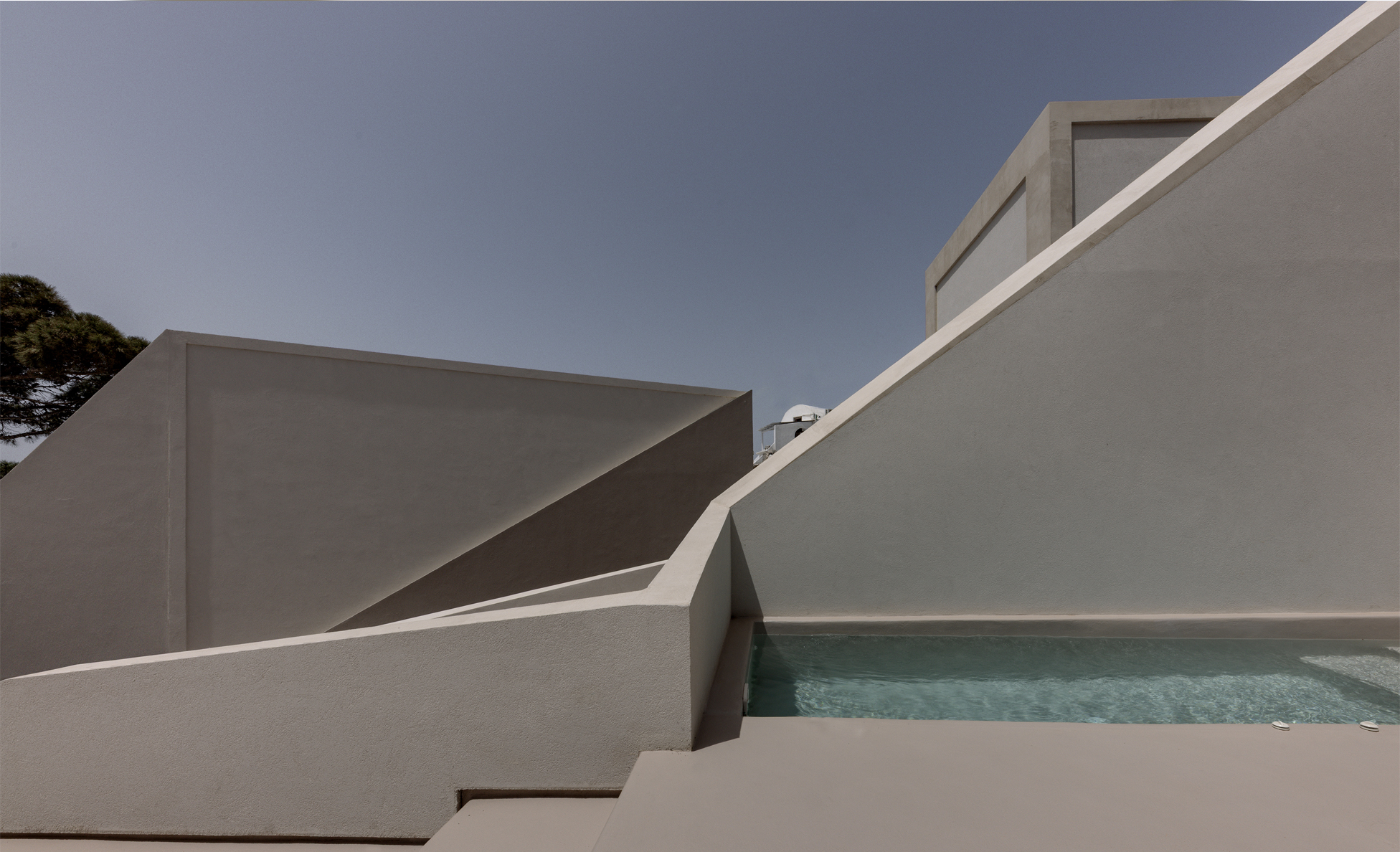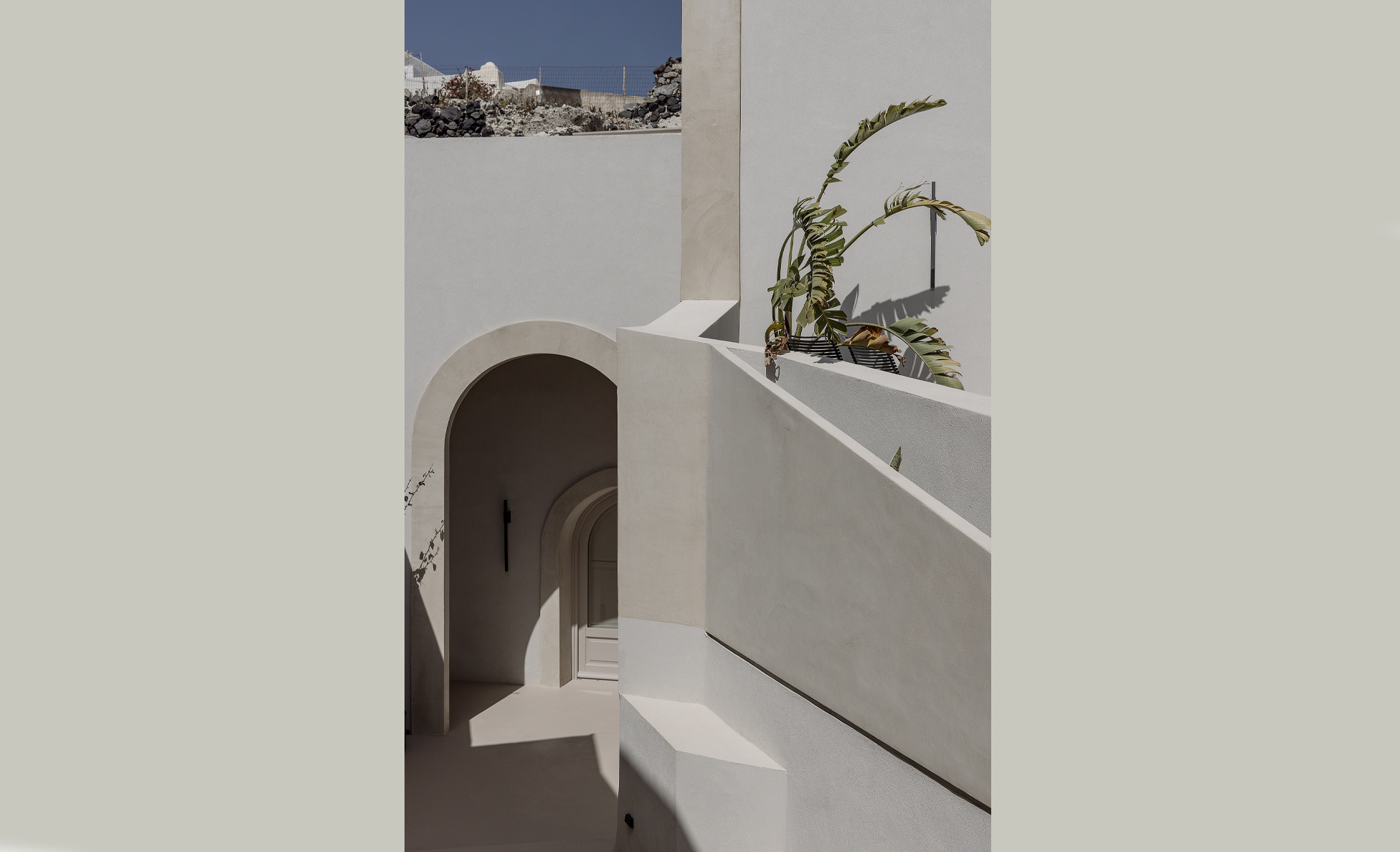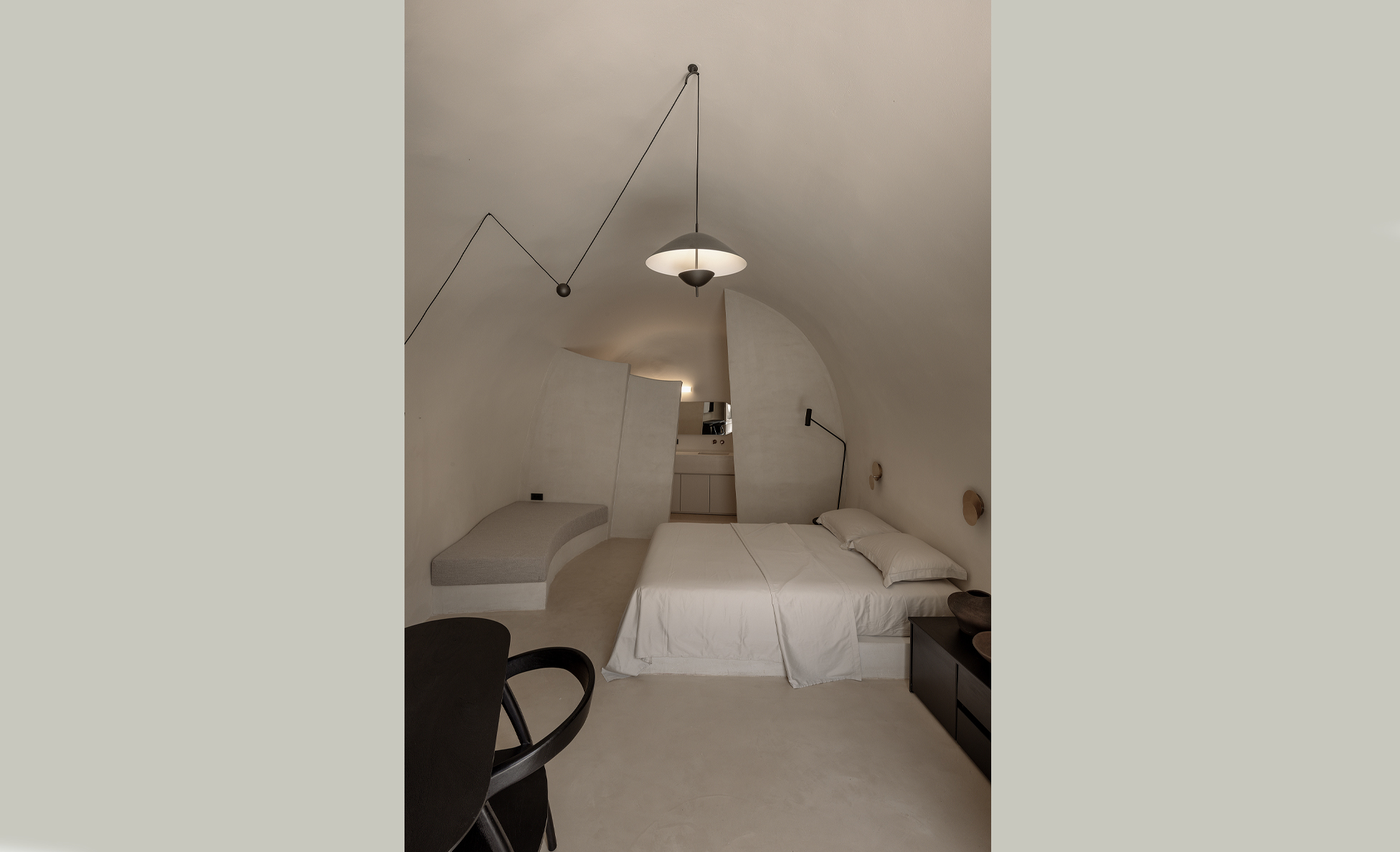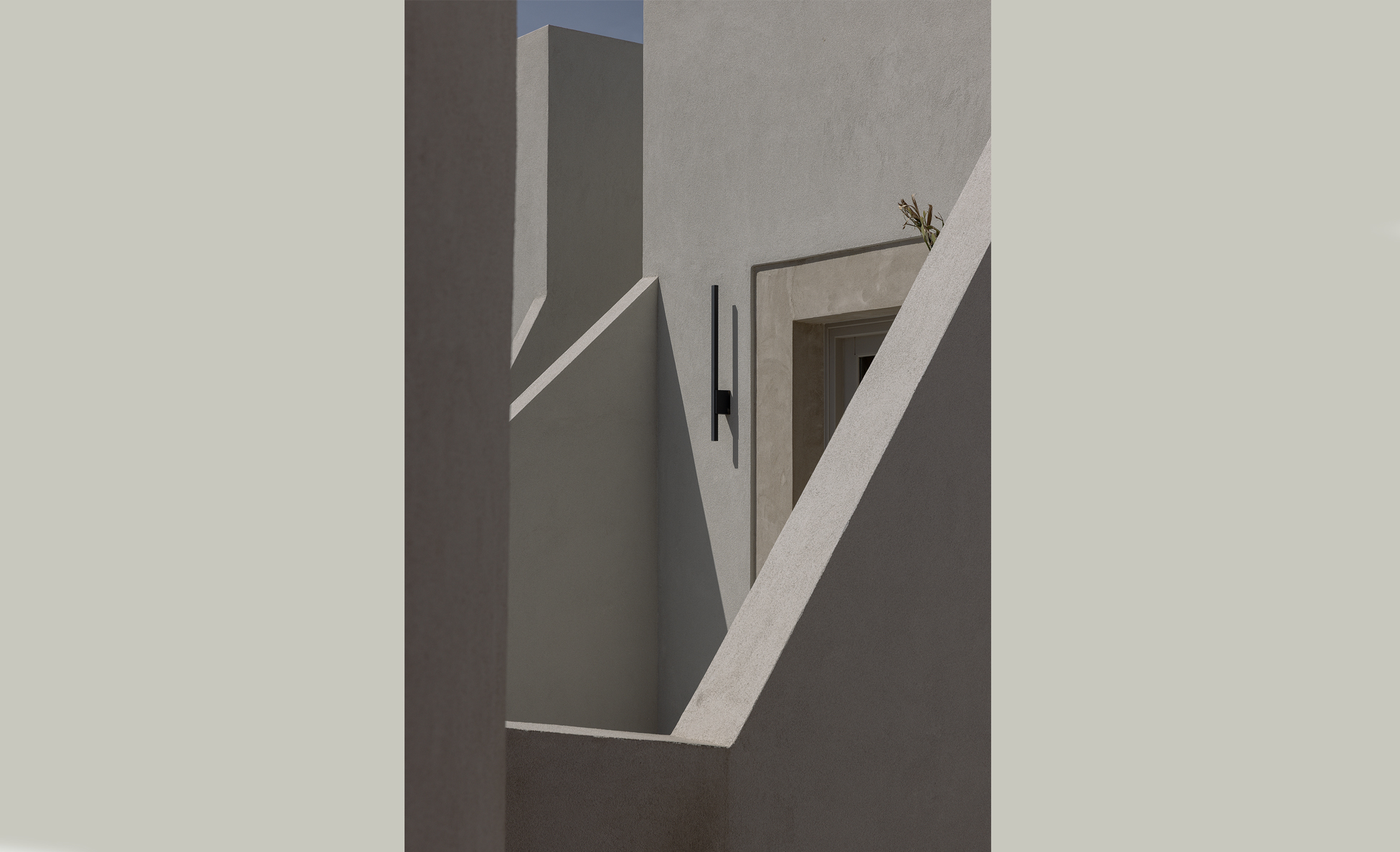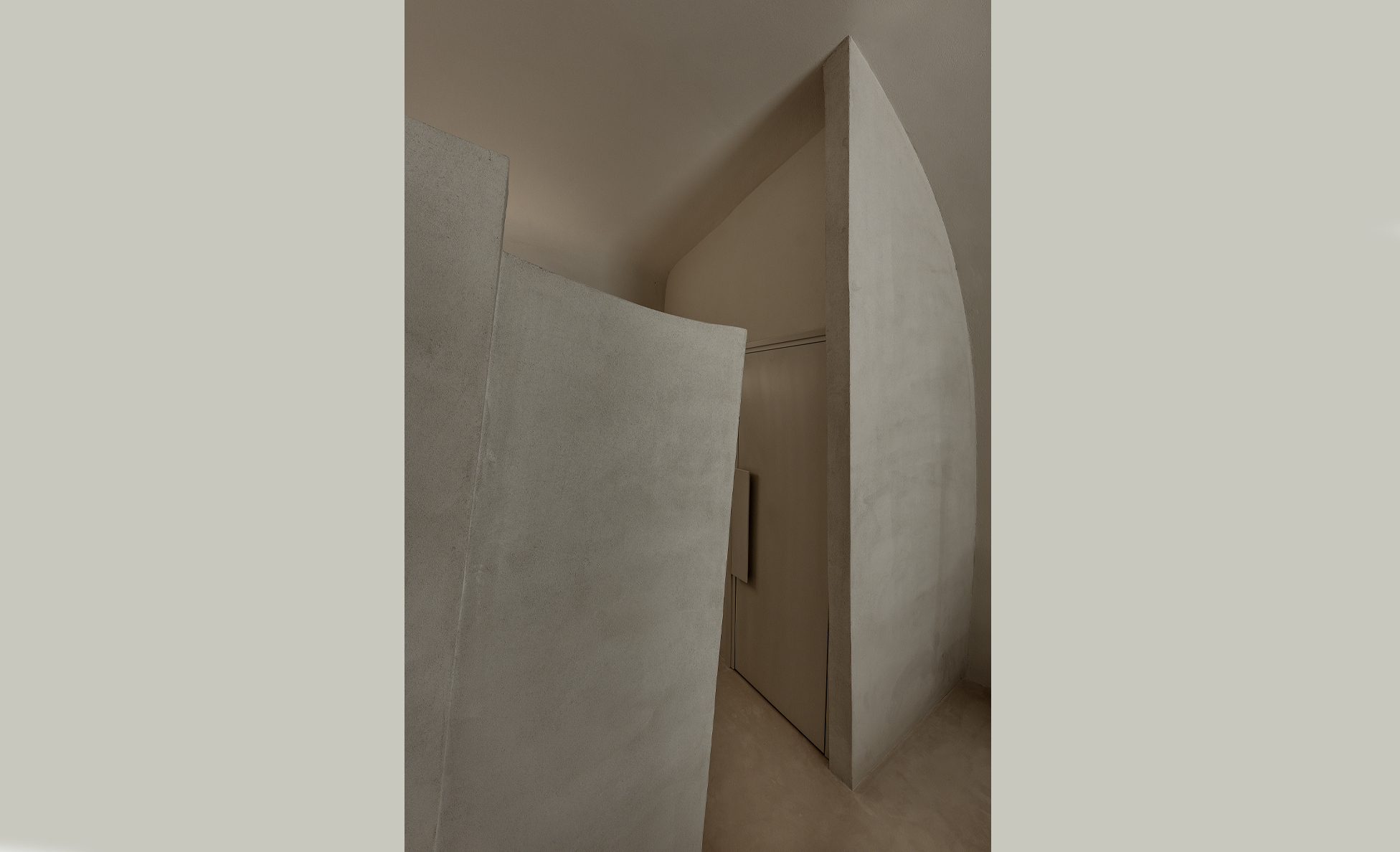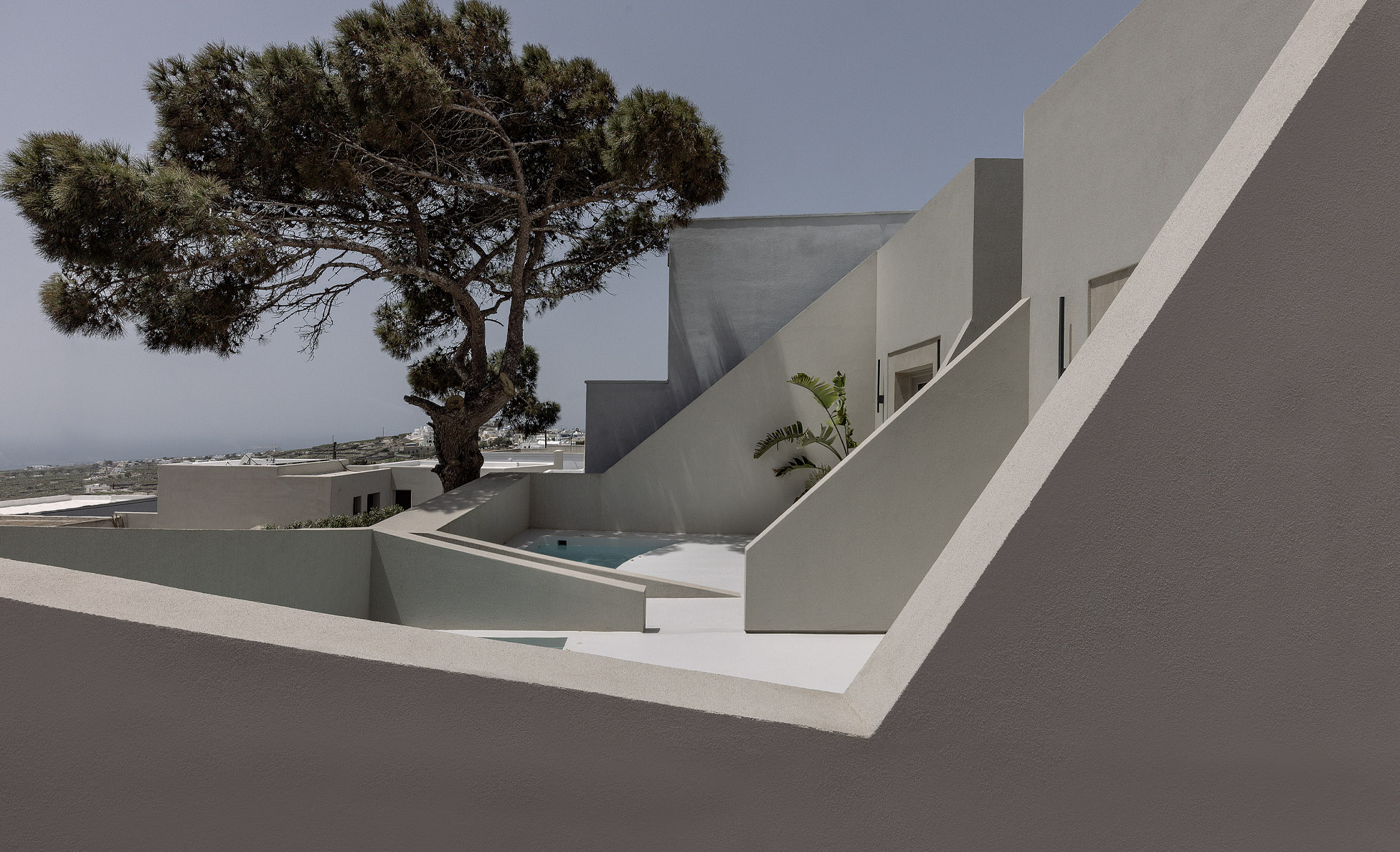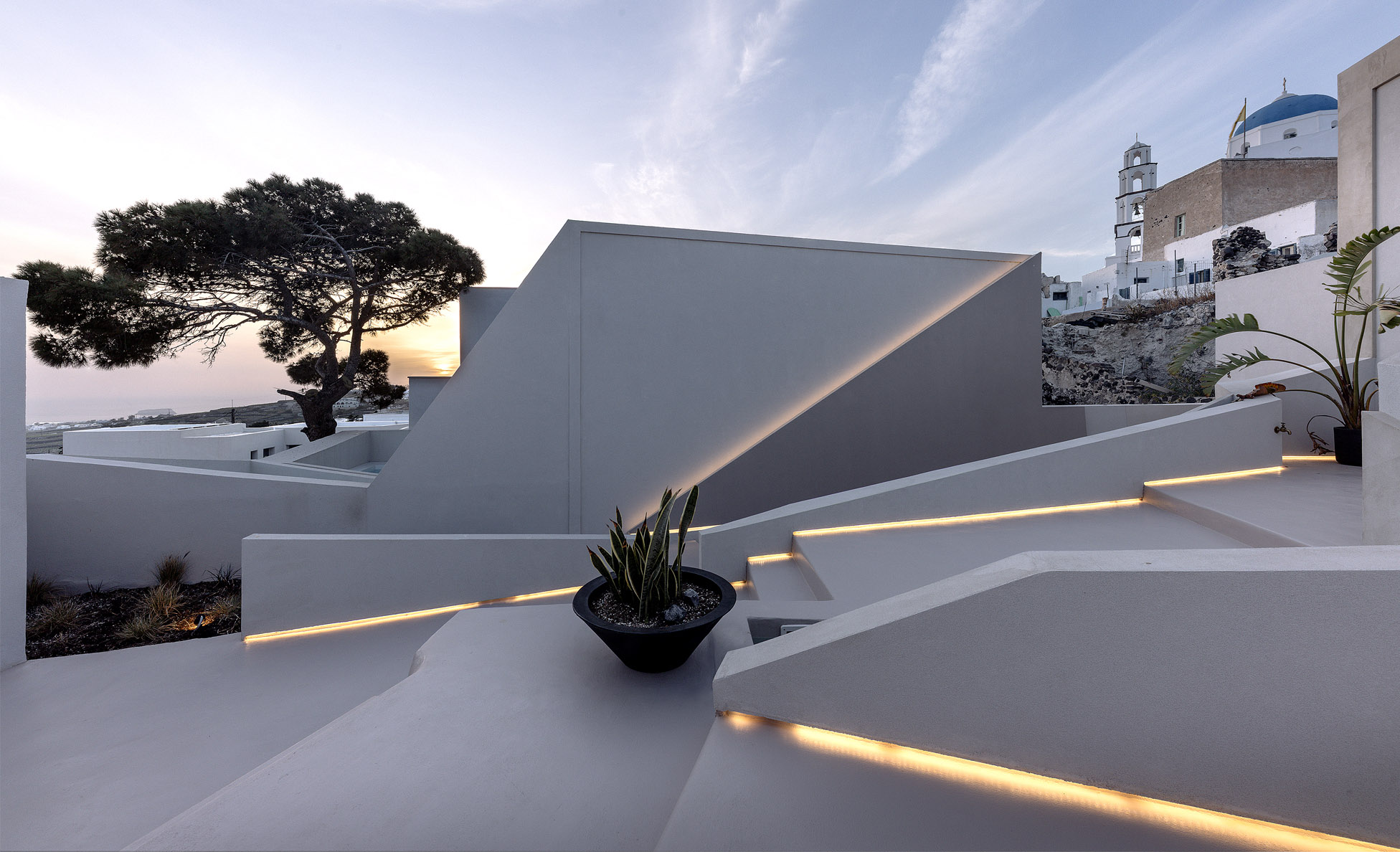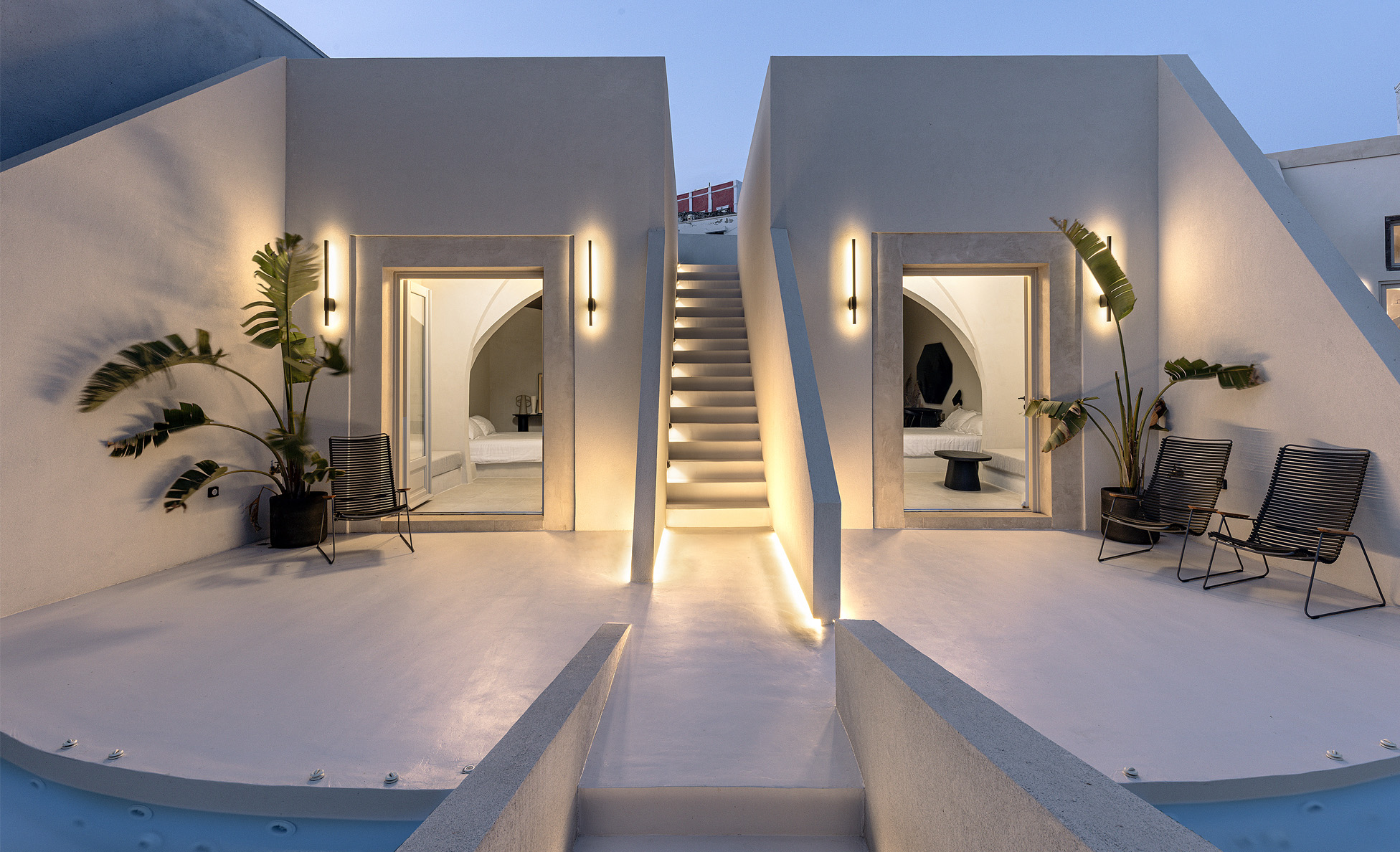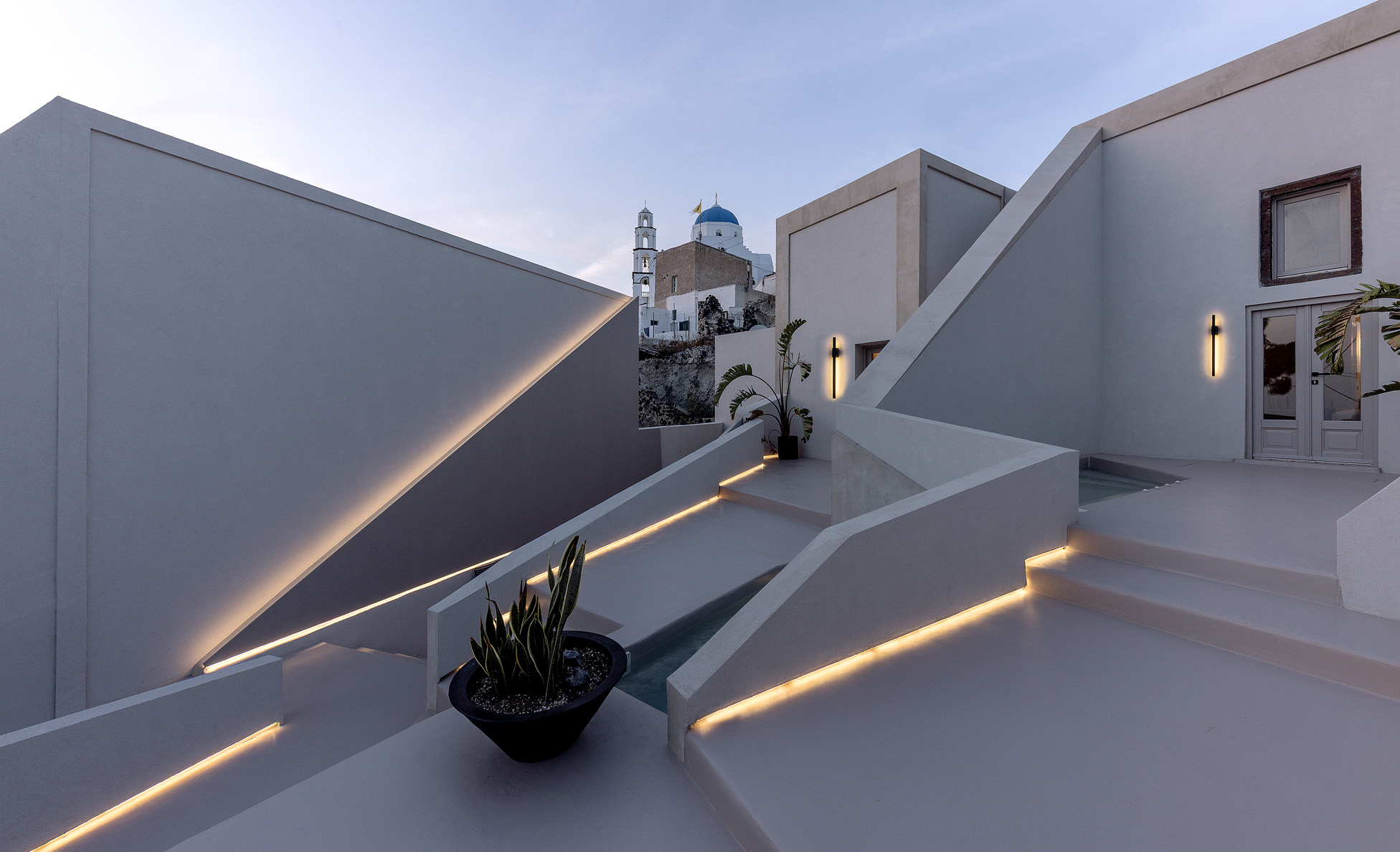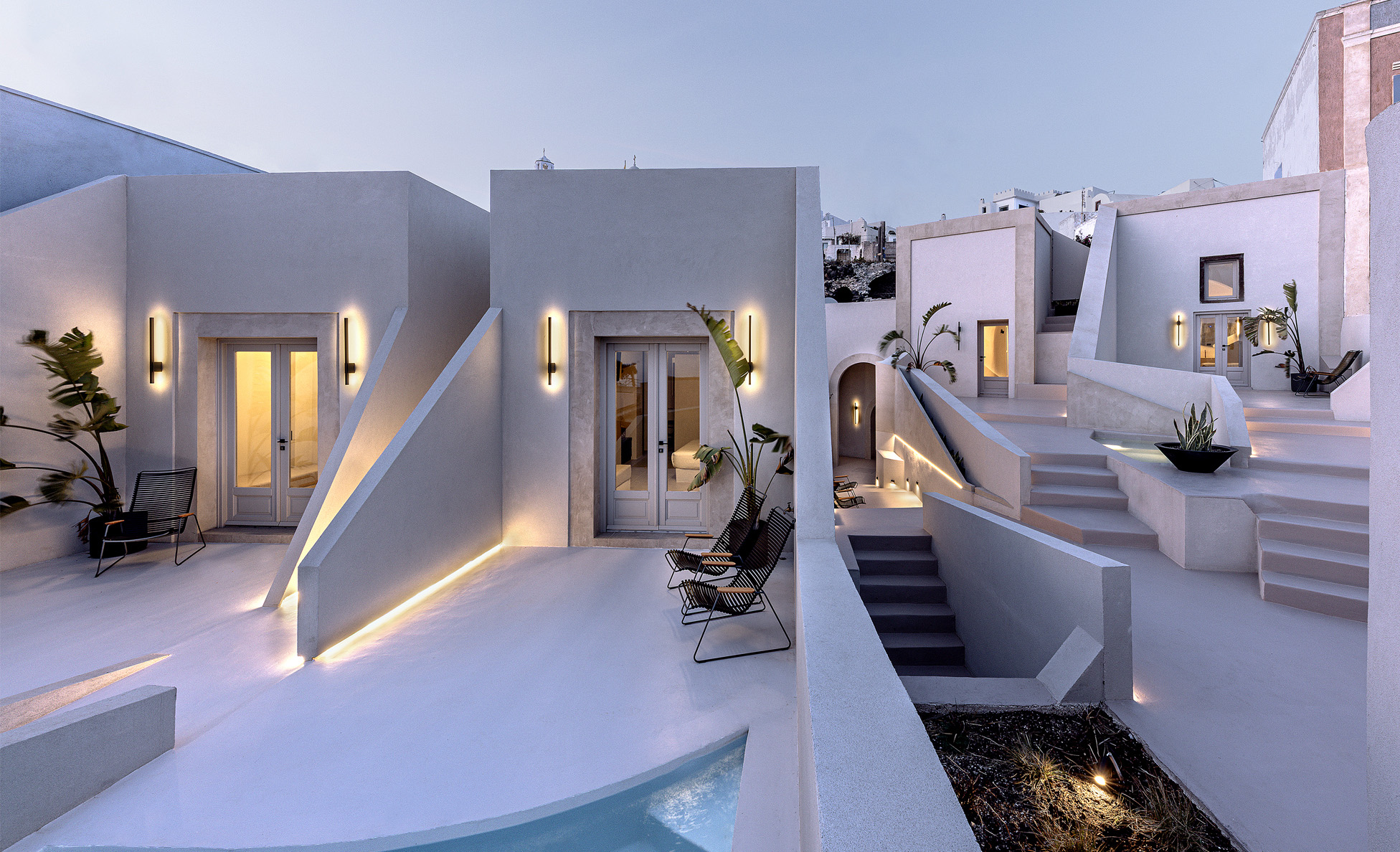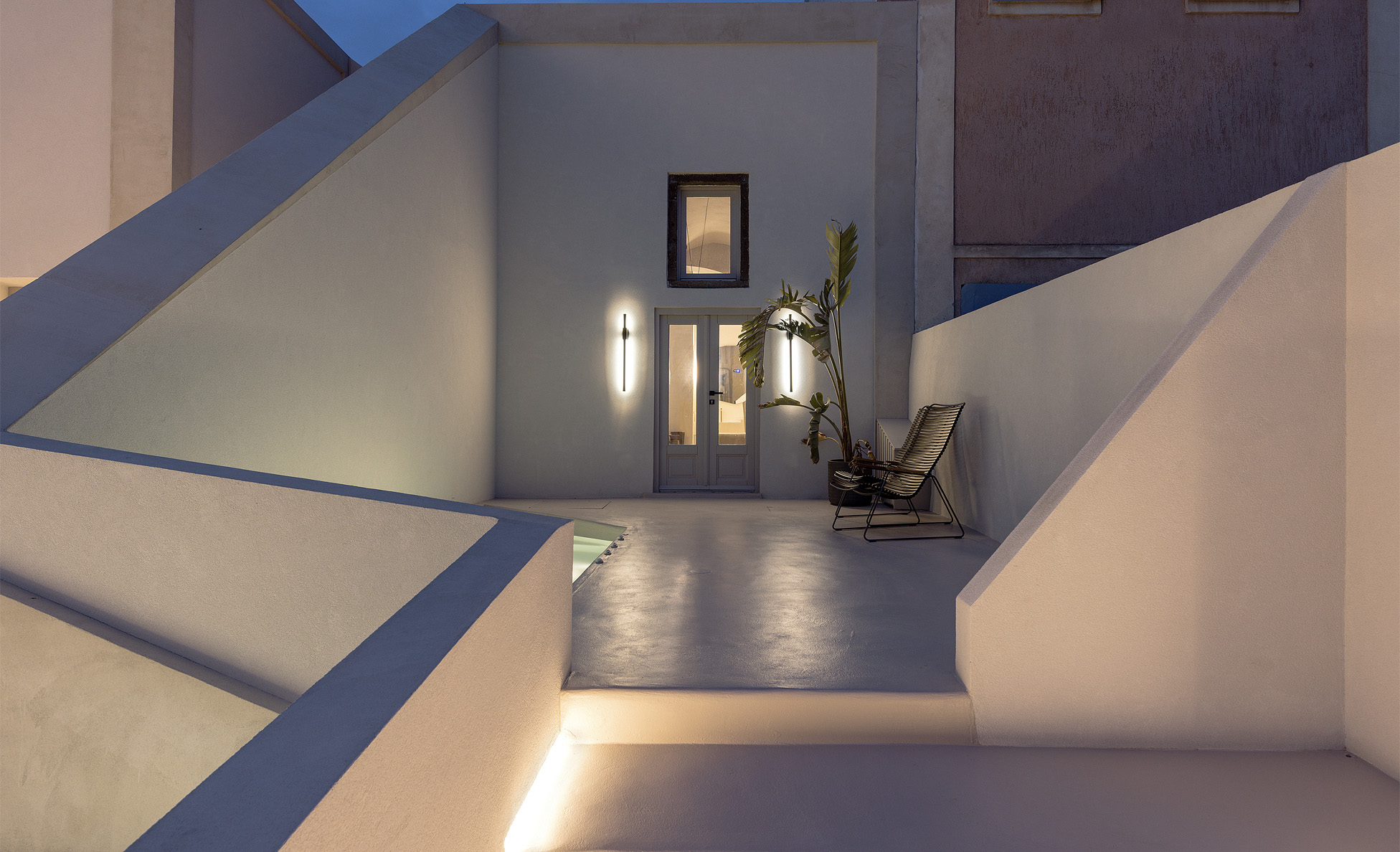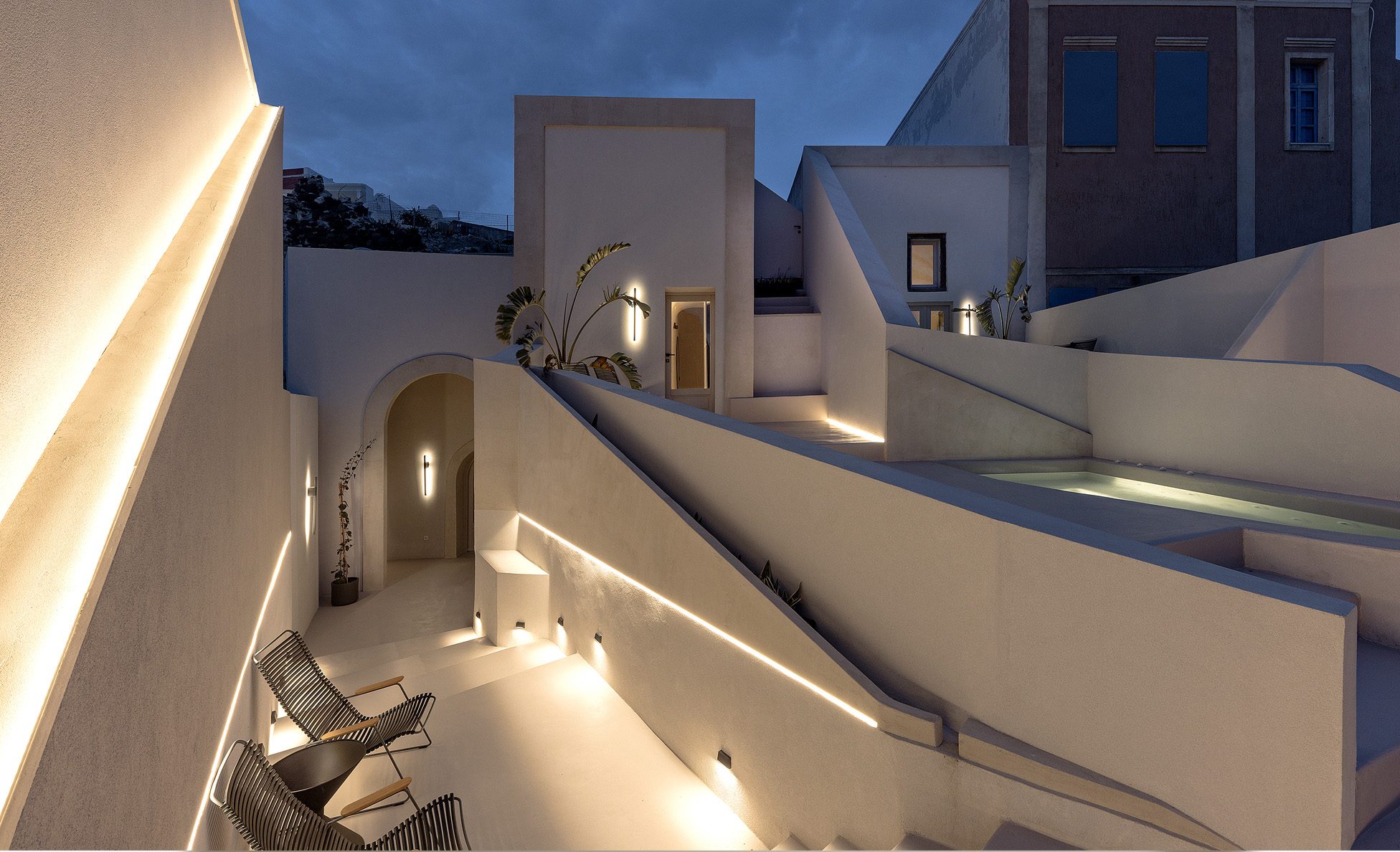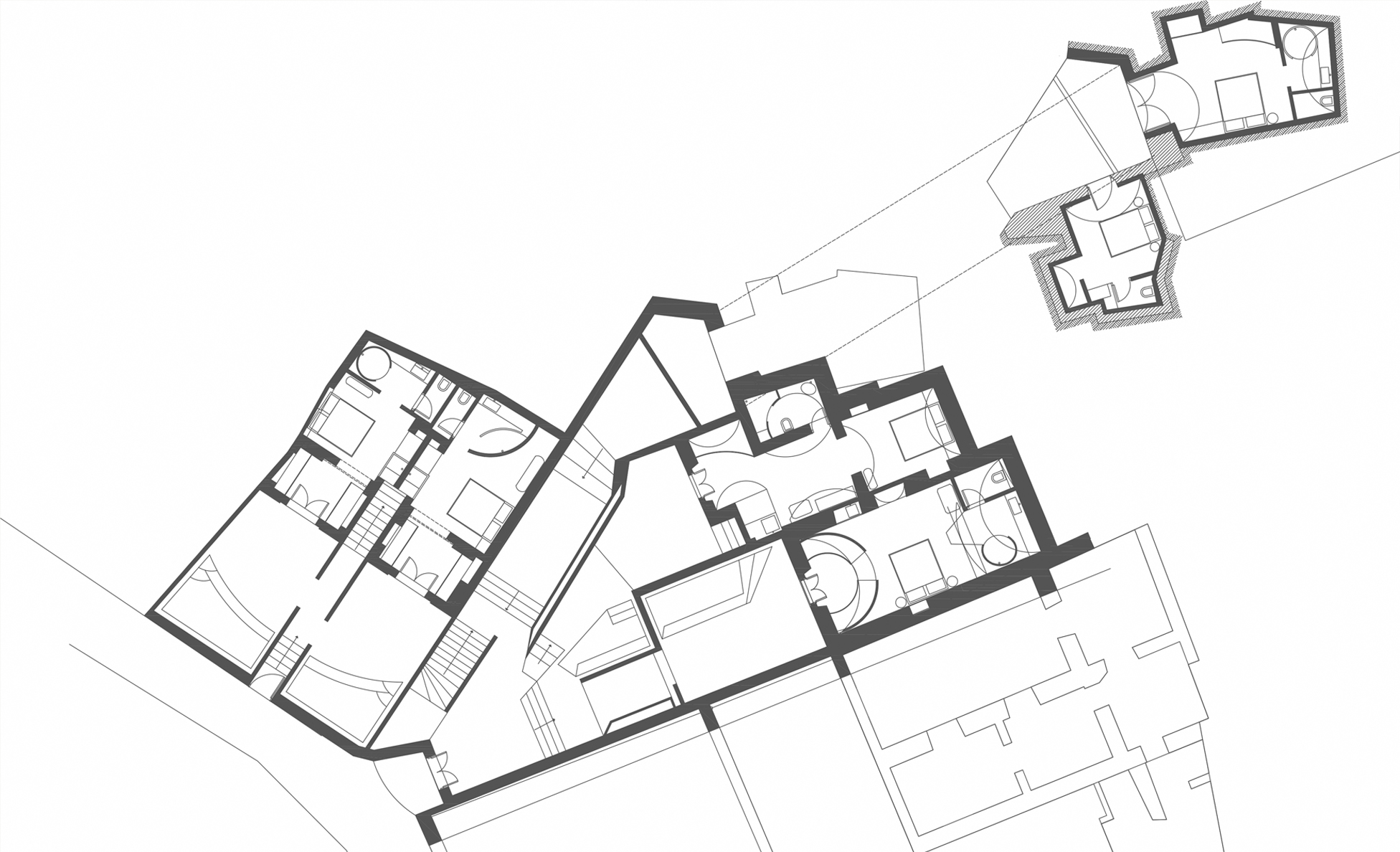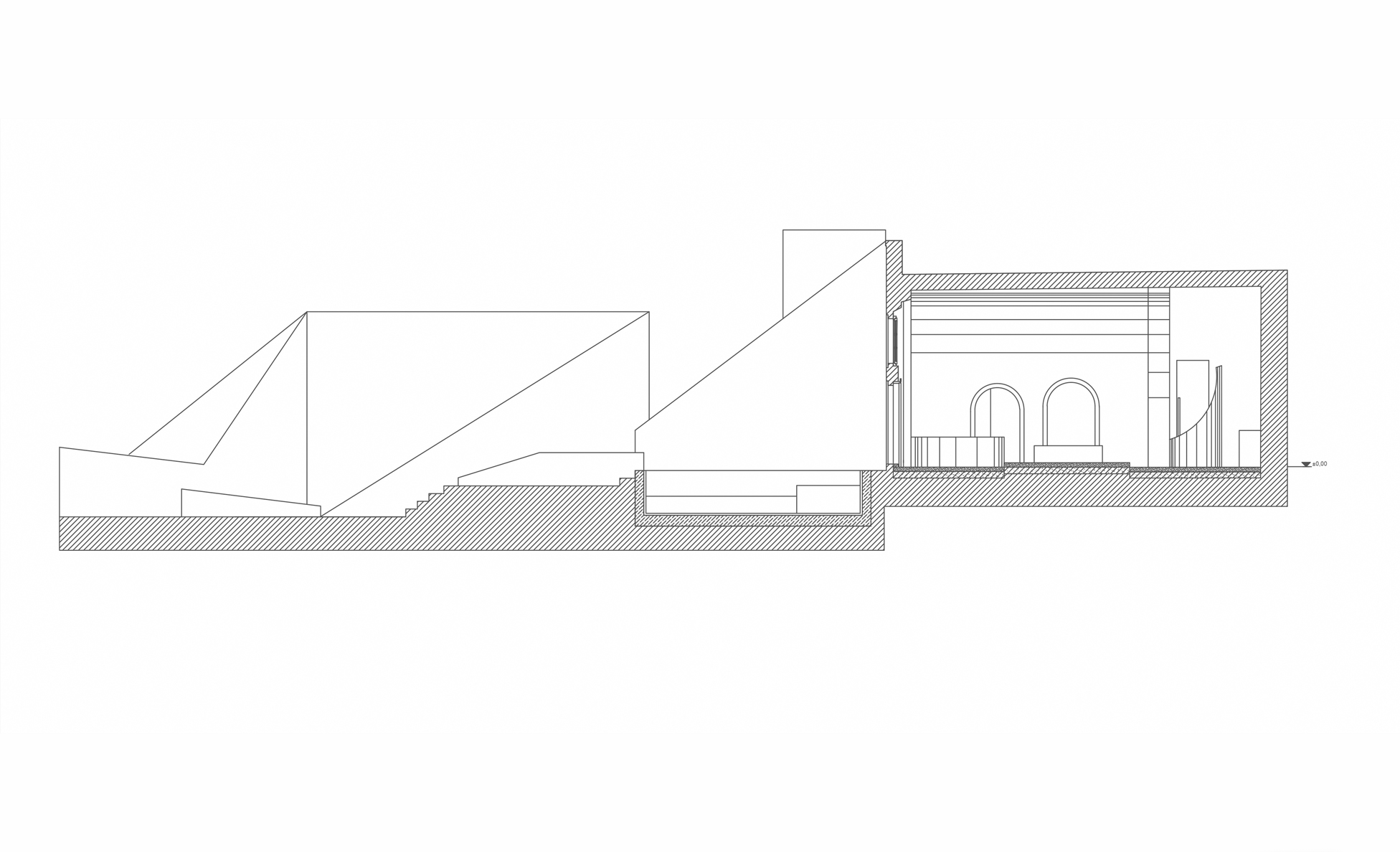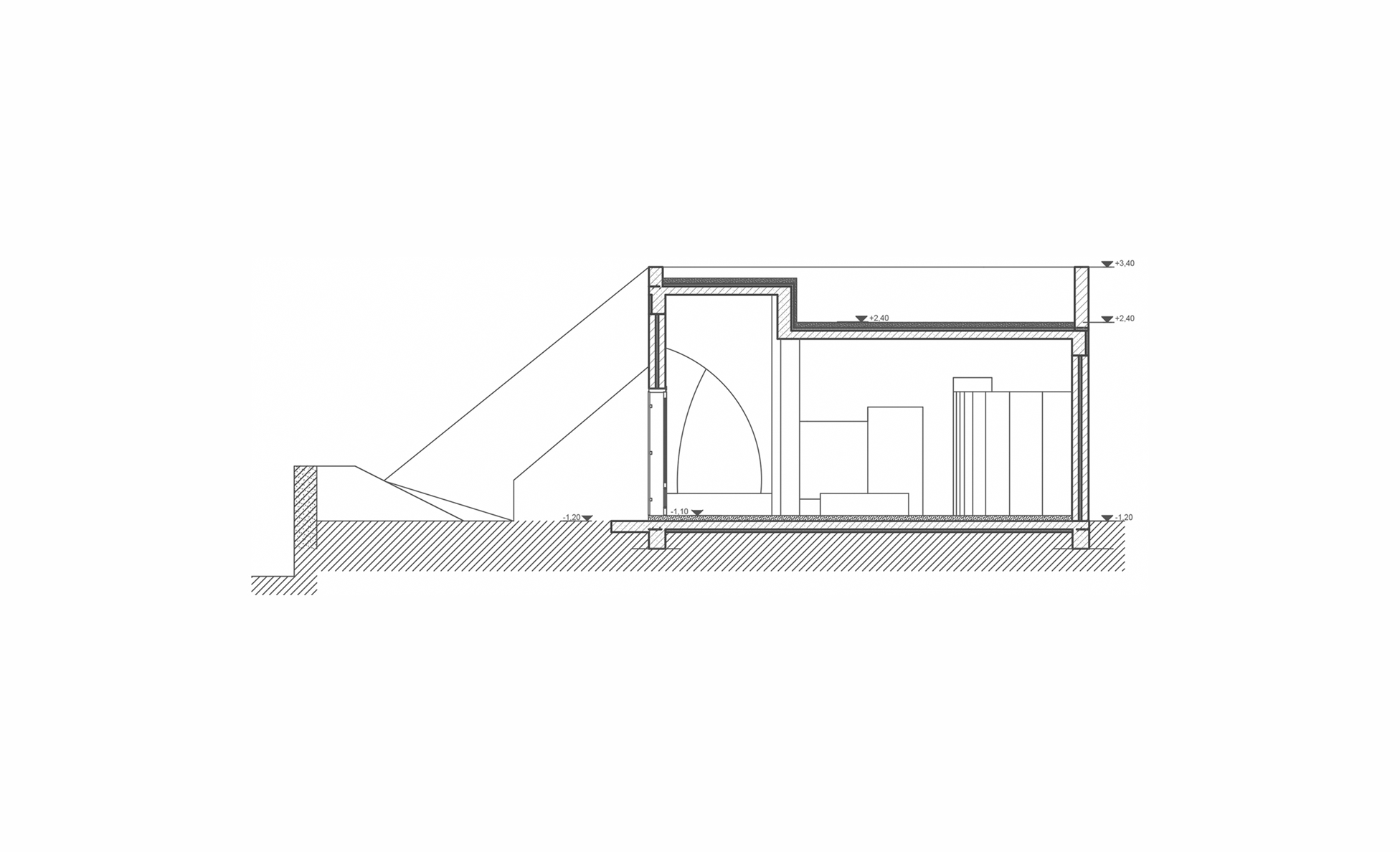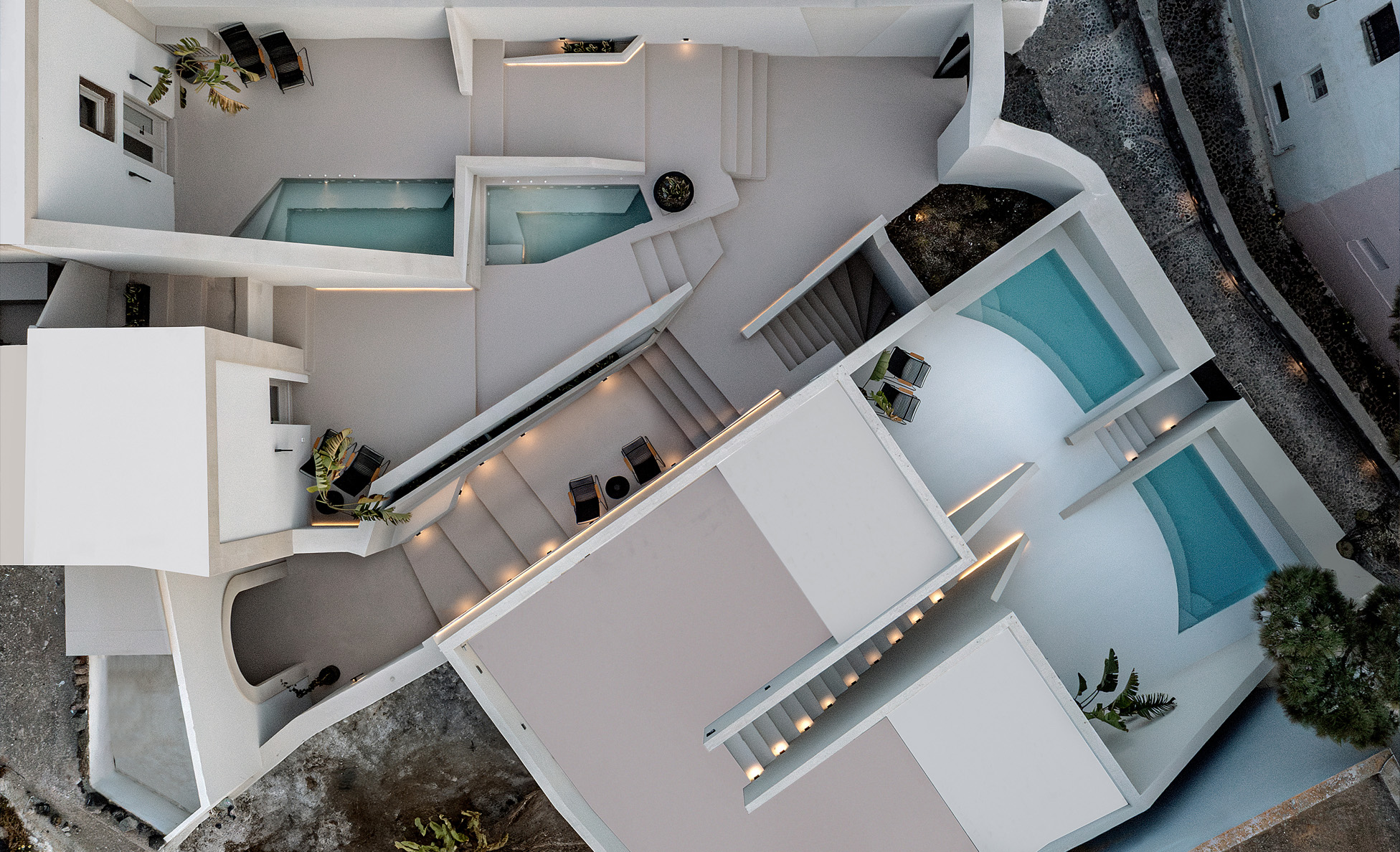Chaos is Calling - HARMONY IN ENTROPY
Architectural order is created when the organization of the parts of a building makes visible the relationships between them and its structure as a whole. When these relationships are perceived as mutually reinforcing and contribute to the peculiar nature of the whole, then there is a conceptual order.
The property is located in the traditional settlement of Pyrgos Santorini and is part of a mansion building from 1876. The project concerns the reconstruction of two excavated spaces where the servants of the time were housed, the reconstruction of two stables and the erection of a building on part of the property. After researching photographic archives, it was found that during the 1970s interventions and additions were made which altered the morphology of the facades. The current situation was completely opposed to the most basic architectural element of Pyrgos, that of homogeneity and unity. An obsession for the absence of serious class differences. Characteristic of “the case di Venezia” during the first and second period of the Venetian territory.
Our goal was to restore the Venetian ideals of equality and justice to the property, while also taking into account the intrusion of arbitrary features, creating a new conceptual language of asymmetrical symmetry.
The exterior space consists of a complex, angular formal language. Sharp, slanted walls and fractured planes that defy axial logic and conventional symmetry. These tectonic gestures feel almost like frozen motion, as if the architecture has been caught mid-collapse or mid-eruption. However, it does not feel disorderly. Yet, it does not feel disordered. Instead, the chaos is calibrated.
Despite the fragmentation of surfaces and boundaries, the space gives a sense of protection and intimacy. The high, sloping levels enhance privacy and define zones with surprising softness. Here, entropy is not violent. It is a gentle dismantling of certainty to allow surprise and discovery.
The interior spaces offset the exterior elements through curvatures. These are smooth and although intersecting, they surround a continuous whole. This juxtaposition reveals an architectural intelligence: the interior is not an imitation of the external chaos, but its emotional resolution. The vaulted arches, ancient and sacred forms, ground the work in a deep architectural genealogy
Light here is not just a condition, it is a collaborator. The angular geometries are constructed in such a way that they trap, reflect and sculpt light throughout the day. Architecture becomes kinetic through light — not moving itself, but activating movement in perception. It refracts on angular surfaces, creating sharply contrasting zones of shadow and glow. These moments of chiaroscuro transform the multifaceted geometry into temporal sculpture.
The color palette is soft, washed out by the sun, almost disappearing into the landscape. The entropy here is not only in the form, but also in the dissolution of the material. The surfaces blur in the heat, erode, fold into the ground.
The design of the work resists legibility. The spatial sequences are not axial or diagrammatic. Instead, there is a labyrinthine logic. This produces an experience that is experiential over logical, physical over visual. The architecture here becomes a landscape of encounter, not of instruction.
This is the key to understanding the title of the work. "Chaos Calls" is not a threat - it is a call to enter a world where order is not predetermined, but discovered. And "Harmony in Entropy" is not a contradiction, it is a philosophy of balance in uncertainty.
